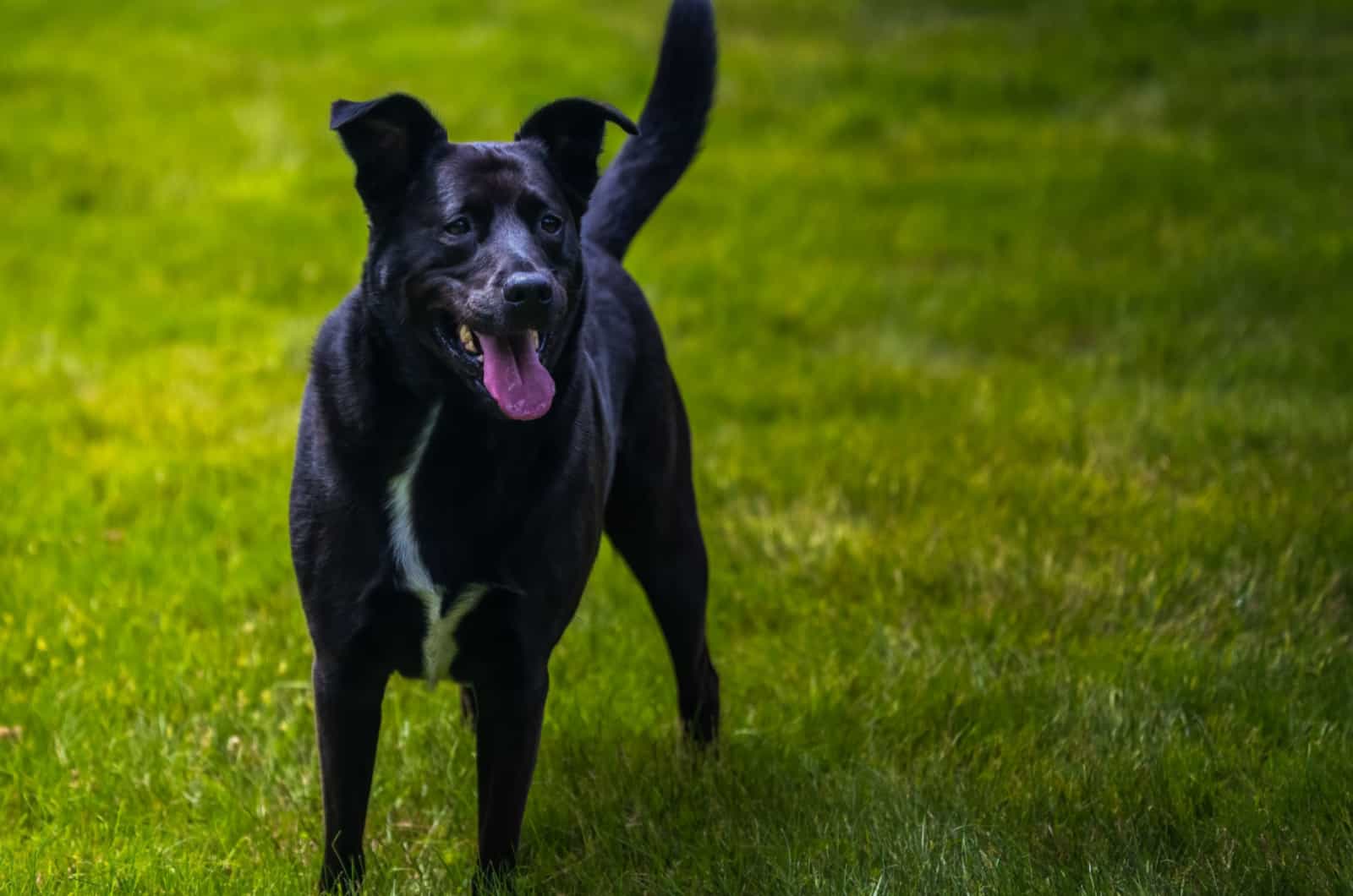Have you ever thought about how many Blue Heeler mixes there are? I’m sure some of these crossbreeds haven’t even crossed your mind until now!
Blue Heelers have earned a well-deserved reputation for their amazing herding skills.
Most of the time, these pups are underrated as herders, even though there aren’t many working canines that can follow their tempo.
That’s why Blue Heelers are usually considered the workaholics of the canine world.
That’s why it’s particularly interesting to see how well these pups would do with added traits from other breeds, including Boxers, Great Danes, and many other distinctive breeds!
29 Blue Heeler Mixes
This list of Blue Heeler mixes contains crossbreeds of this amazing dog breed with all sorts of canines, from working to sporting pups.
These hybrid dogs are truly unique in terms of both physical appearance and their personalities.
Without further ado, here are the best Blue Heeler designer dogs that will amaze you and make you think twice about getting a purebred pet in the future!
1. Box Heeler (Boxer)
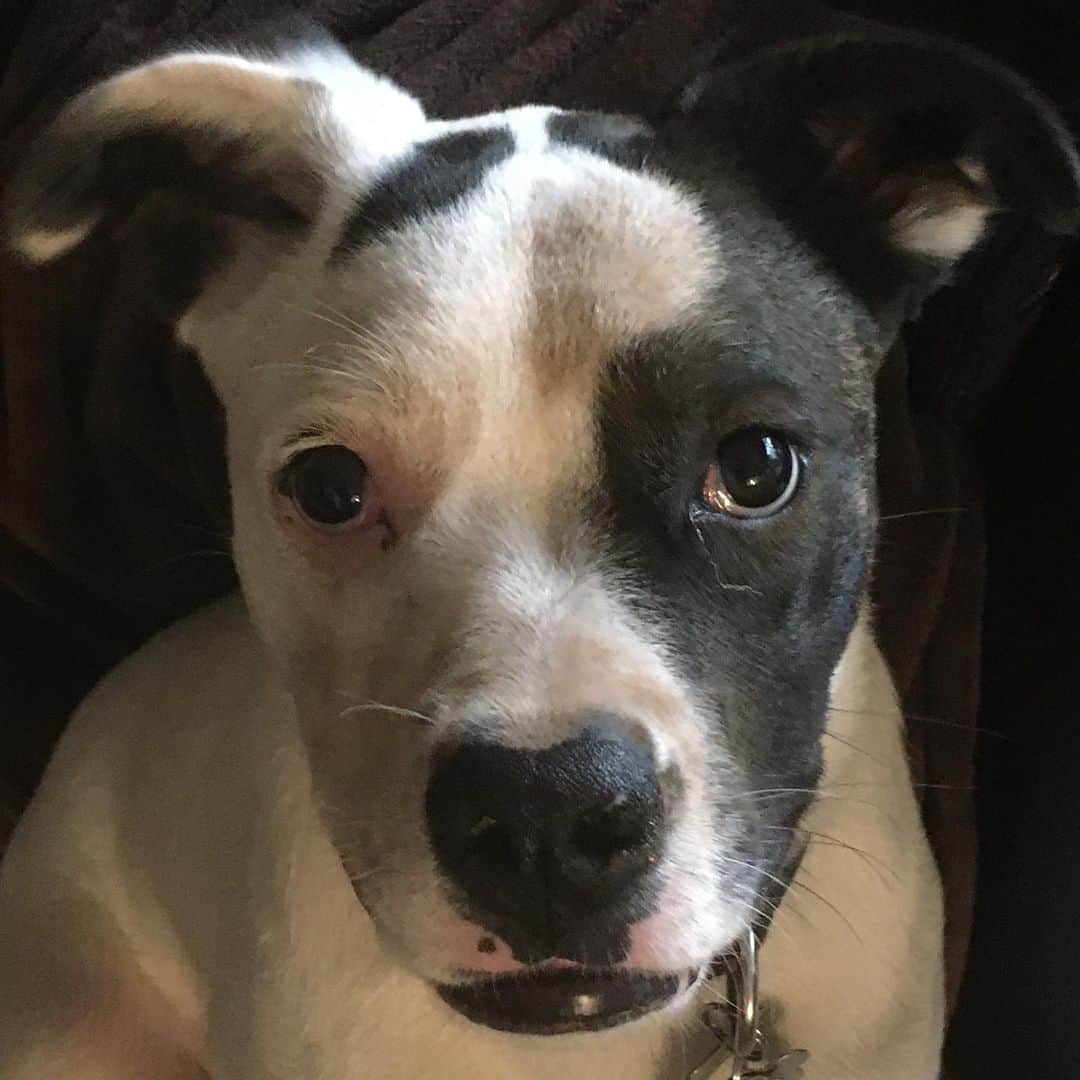
Photo from: @sarah0rla
A friendly and loyal Boxer mixed with a smart and hard-working Australian Cattle dog can’t result in anything other than a great crossbreed that is fiercely loyal to its owner and the rest of the family.
This type of pup is considered a perfect family pet because they’re ready to defend their family at all costs. This might also be the cause of their unfriendly behavior toward strangers.
These heeler mixes are naturally endowed with large amounts of energy, which is why they enjoy outdoor activities, where they can completely let go of their mental and physical tension and release their full potential.
They might seem strong-willed at times, but generally, Box heelers are obedient to their owners and open to training.
When it comes to their physical appearance, it’s safe to say Box Heelers inherit more traits from the Blue Heeler’s side, including the shape of the head and muzzle.
On the other hand, these crossbreeds are the same size as Boxers that grow up to 25 inches in height.
The coat of the Box Heeler comes in a variety of colors inherited by both parent breeds.
2. Beagle Heeler (Beagle)
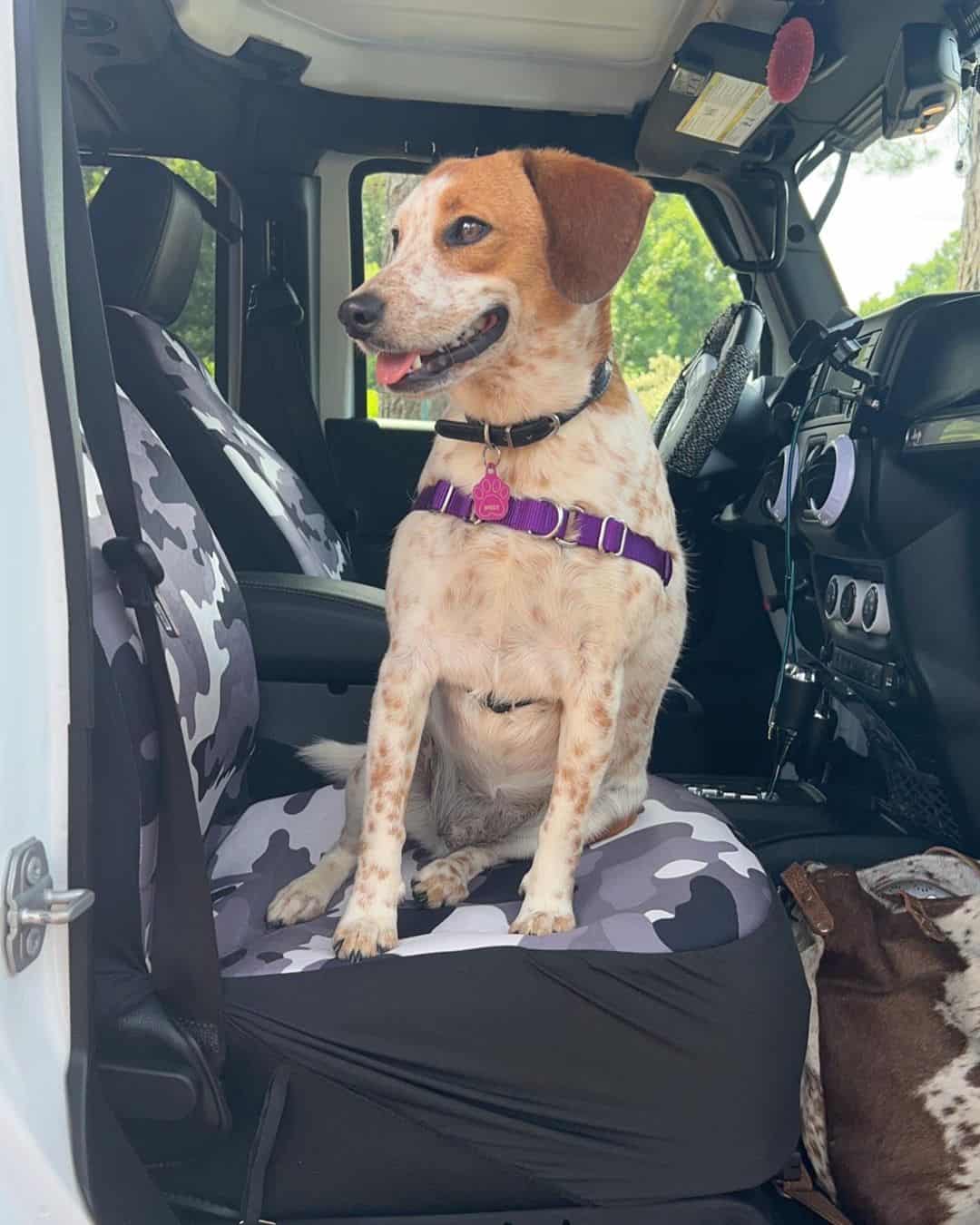
Photo from: @dixie_vixen
This jolly-looking pup is a cross of two great purebred pooches, Blue Heelers and Beagles! It’s really difficult not to feel energetic and happy around this dog breed, which will do everything to please their dog owners.
Such heeler mixes have all of the finest attributes that you might desire in a (furry) friend, including being loving, loyal, friendly, and adorable.
In terms of appearance, the Beagle Heeler is quite easy to spot. They have the head shape of the Beagle, with long ears (the Beagle’s trademark), but the fur coloration of the Blue Heeler, a distinctive shade of blue.
Although their size might vary, on average they mature into medium-sized dogs.
Beagle Heelers can live up to 15 years, the same lifespan as Beagles and Australian Cattle dogs.
3. Texas Heeler (Australian Shepherd)
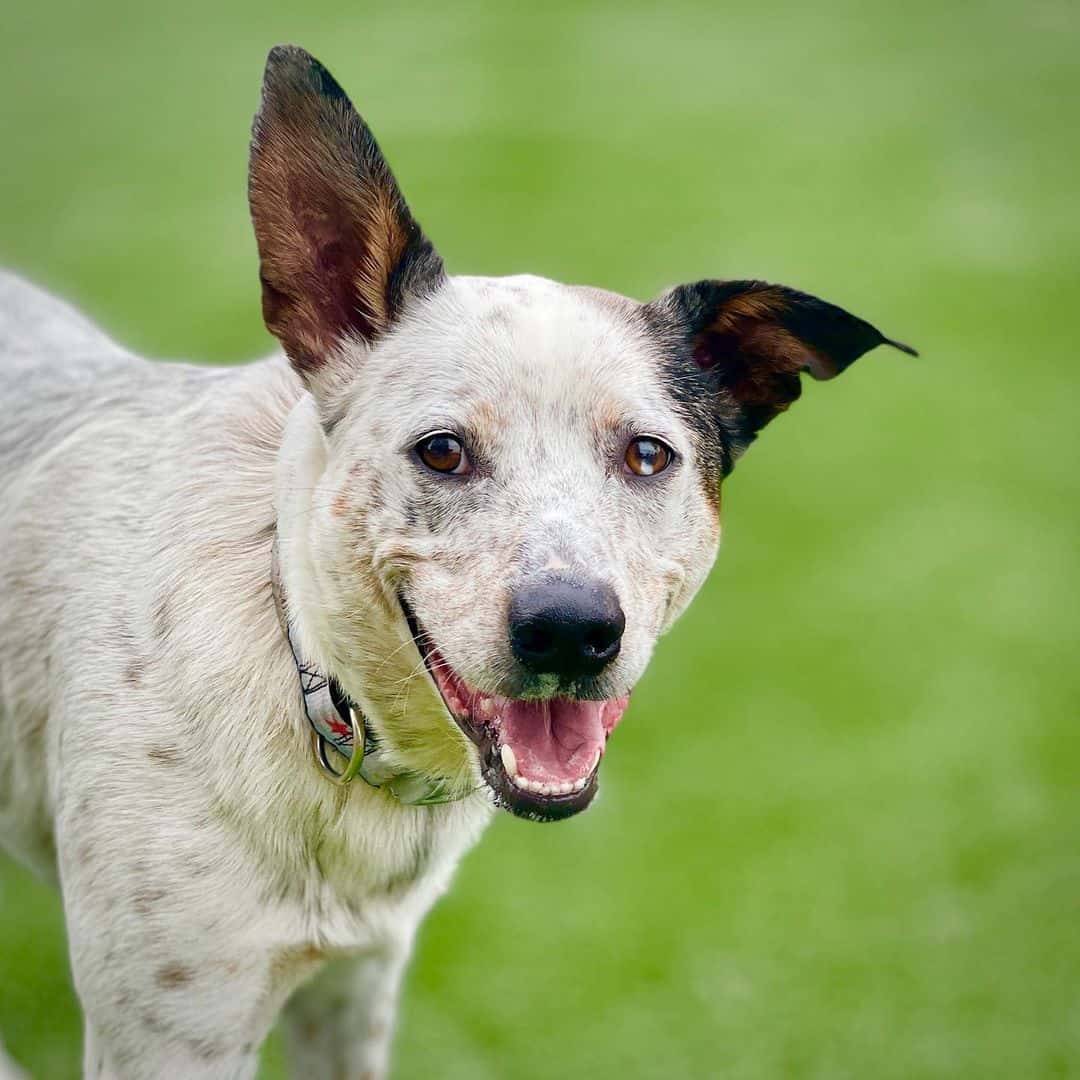
Photo from: @indythetexasheeler
The name of this mixed-breed puppy is just as interesting as the pooch itself! This hybrid dog is the result of breeding Australian Shepherds and Australian Cattle dogs.
Even though both parent breeds have Australia in their names, their mixed-breed is more related to Texas, as it is the place where Australian Shepherds were produced and further developed into the Aussies we know of today.
The intellect and the energy of the crossbreed cannot be doubted, given the characteristics of their parents.
This type of hybrid canine is loved by a great number of families around the U.S., who are fascinated by Texas Heeler’s well-mannered behavior and the dedication to each task they’re given.
These canines are great with children, just like Aussies. However, as they belong to a herding breed, they might have the urge to herd babies and toddlers because of their size; therefore, it would be good to keep an eye on them while playing with such small kids.
4. Cattle Shepherd (German Shepherd)
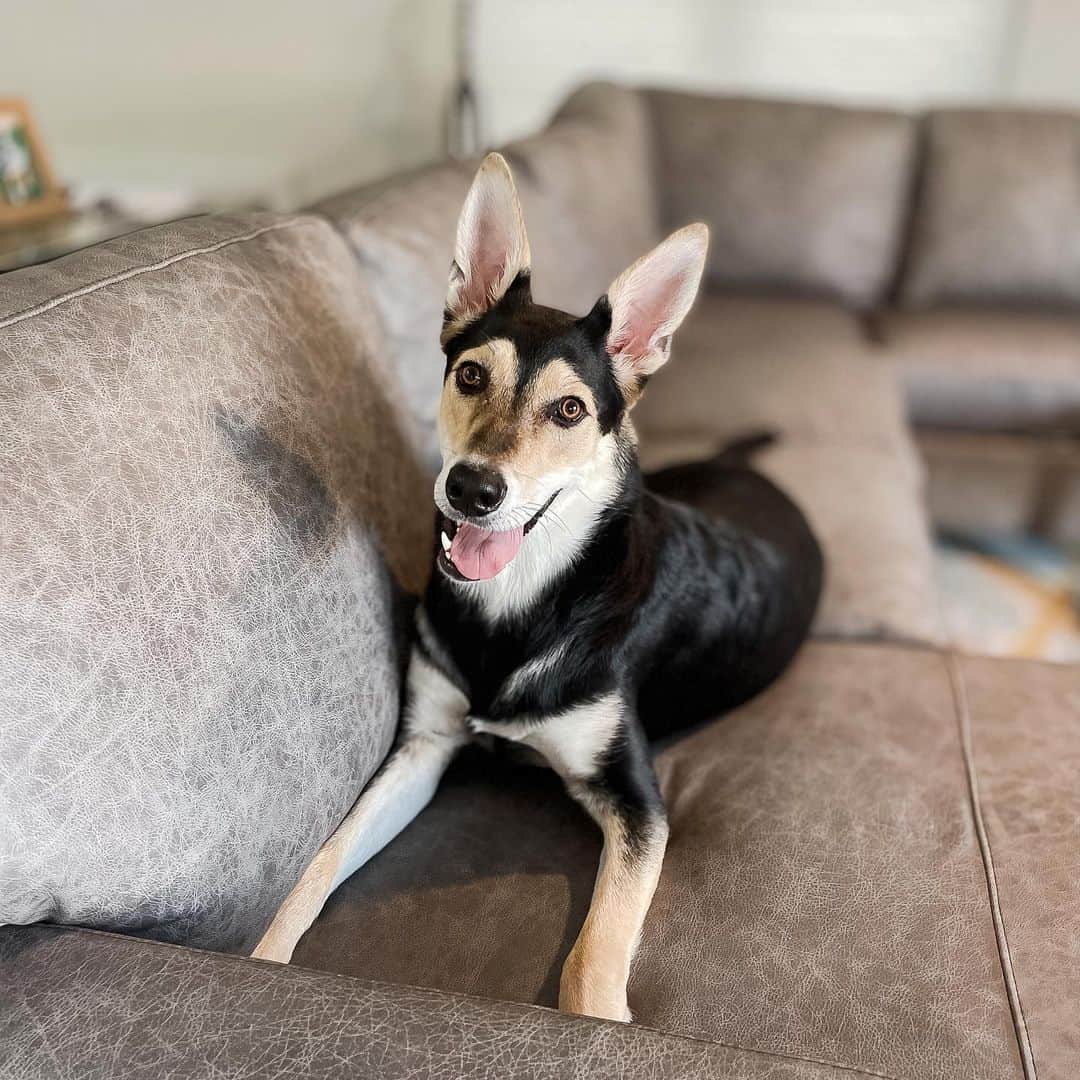
Photo from: @konaandthemutt
It might be said that Cattle Shepherds are best suited for the role of the family pet in spite of their excellence as protectors and herding dogs.
Blue Heelers and German Shepherds are the main reason Cattle Shepherds are so well-mannered. This mix is a recipe for a perfect furry family member, for sure!
These pups resemble German Shepherds by the size and GSD’s coat colors, but they also share quite a few similarities with the Blue Heeler.
However, this mixed-breed might not be the best choice for inexperienced owners because they love to be dominant and will want to become the leader of the house.
But, if they’re properly trained, Cattle Shepherds can become fantastic family guards.
5. Aussimo (American Eskimo)
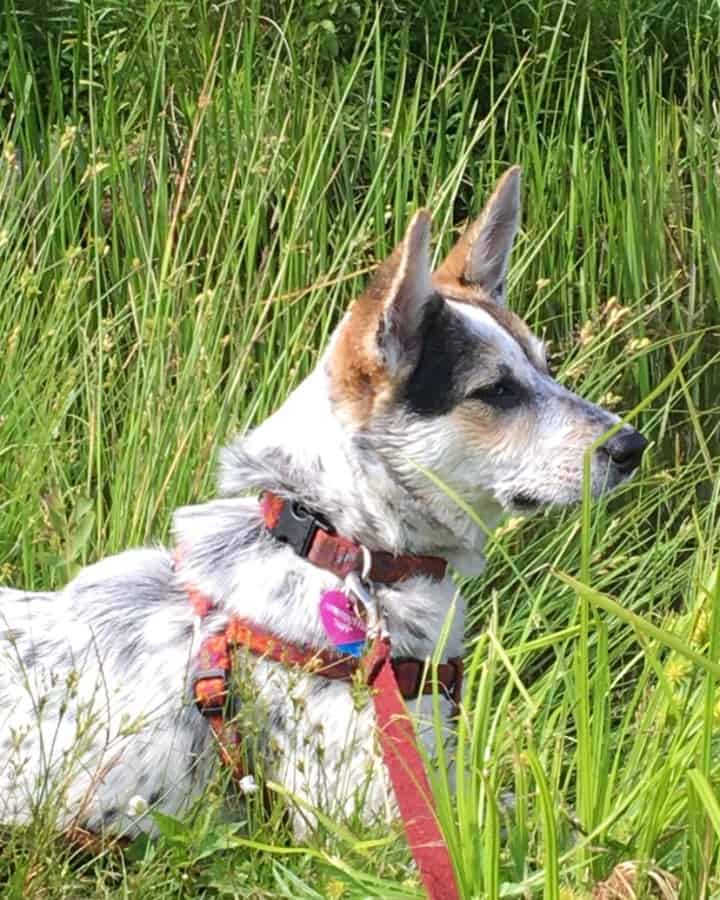
Photo from: @toadallyreptiles
This is one of the most adorable Blue Heeler mixes that combines American Eskimo’s cuteness with recognizable Australian Cattle dog shades.
The crossbreed shares plenty of similarities with their American Eskimo ancestors, including temperament. They’re highly intelligent canines with an adventurous spirit.
Aussimos love spending time with children, and kids love cuddling with them, which is why they’re a great addition to every family.
Still, these pups require socialization training from early puppyhood, especially because they’re not very friendly towards people or animals they haven’t met before.
6. Dalmatian Heeler (Dalmatian)
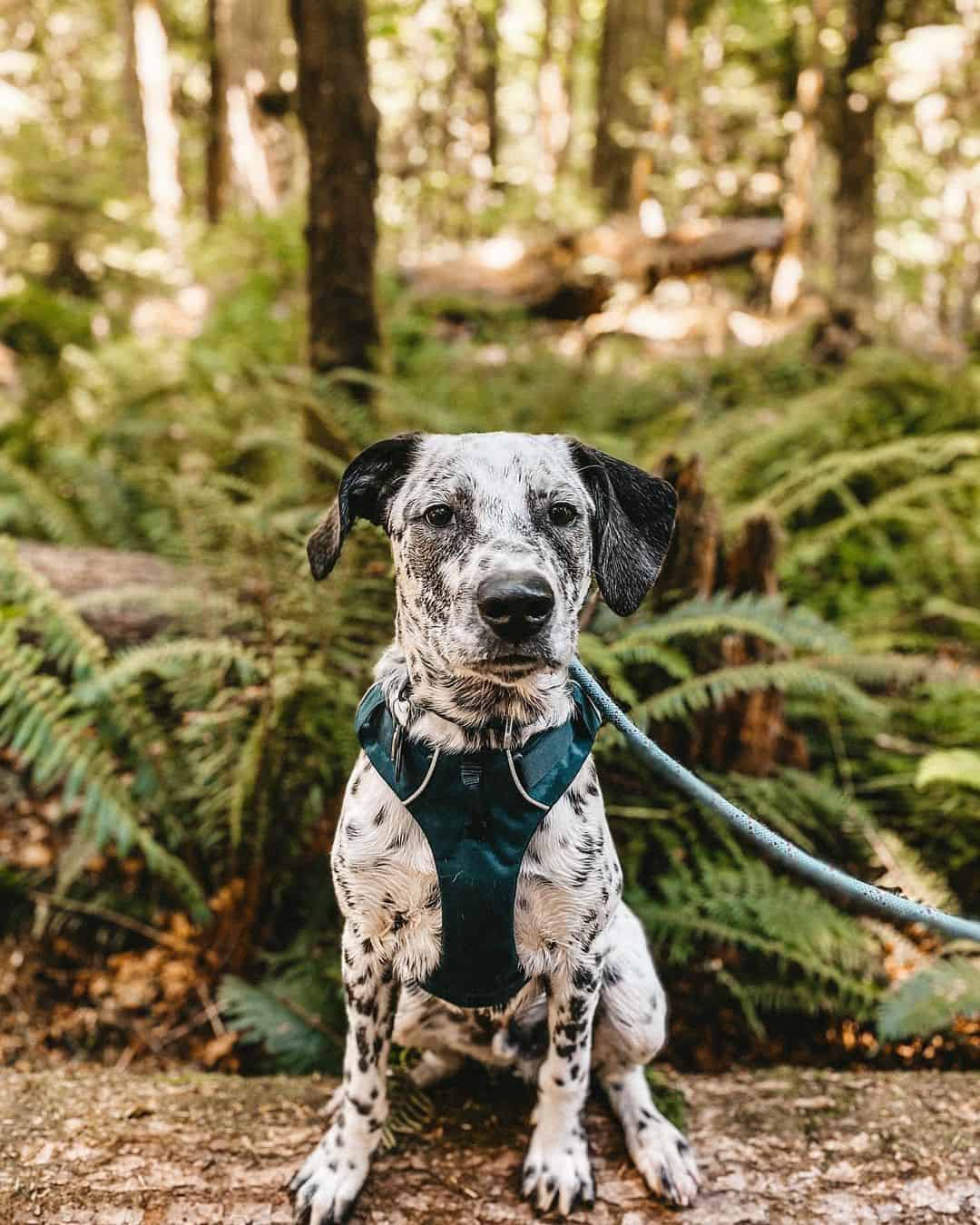
Photo from: @obithedalmatian
Dalmatians are known as canines that are full of energy; they love to play and spend time outside, but they also like to cuddle with their owners a lot!
When you combine that with a loyal and protective dog like an Australian Cattle dog, you’ll receive a one-of-a-kind doggie that will melt your heart in a matter of seconds.
This cross pup is usually covered with Dalmatian-like colors but with longer ears that are the same shape as a Blue Heeler.
These canines can become a bit clingy, so don’t be surprised if they suddenly become too attached to you, especially if someone they don’t know appears near you.
This is one of the main reasons why Dalmatian Heelers are a better option for people with previous dog-owning experience.
7. Blue Tzu Heeler (Shih Tzu)
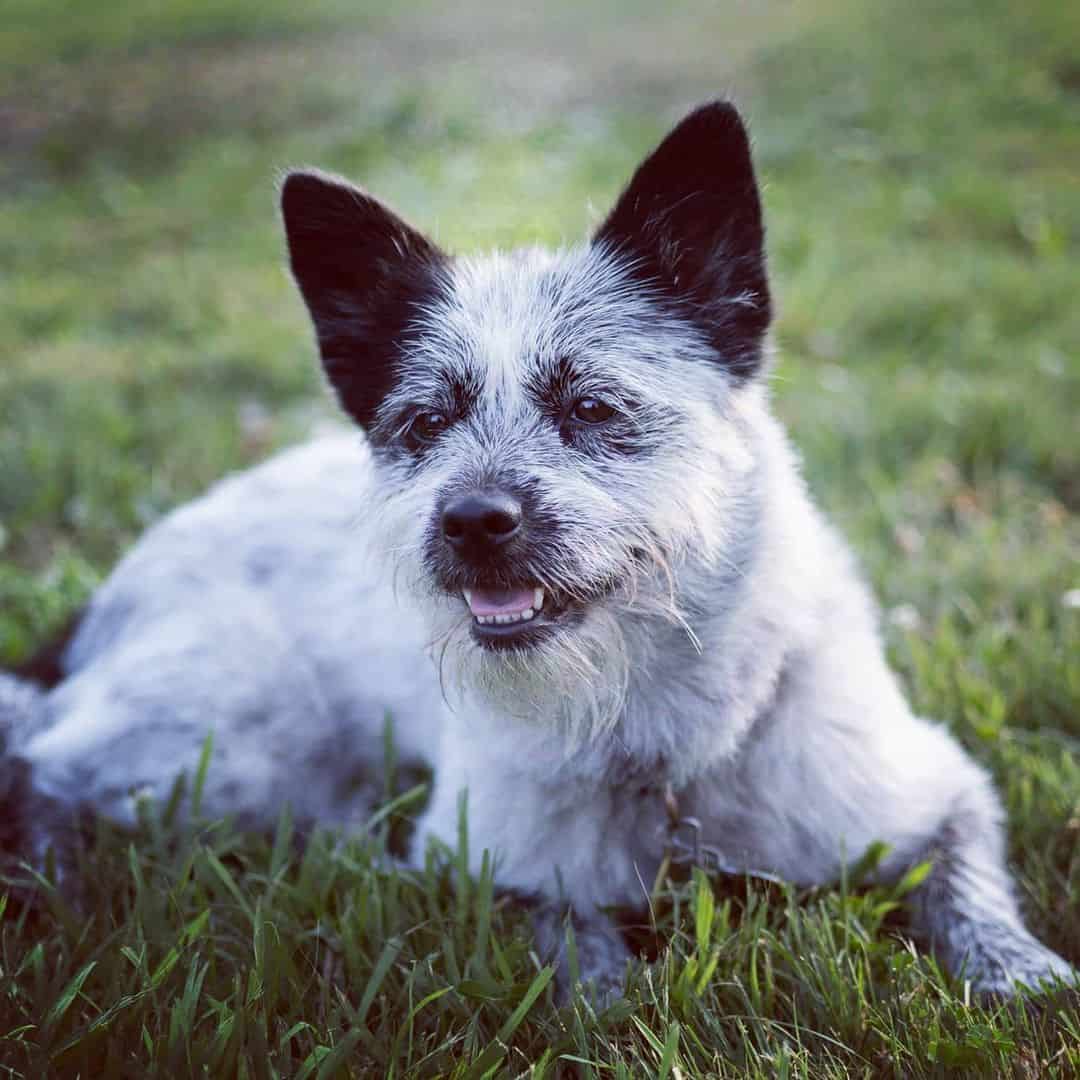
Photo from: @instadancoburn
This is a perfect crossbreed for all people who love the temperament of the Blue Heeler canine but prefer small dogs rather than medium-sized ones.
Blue Tzu Heelers are full of love that they share with their owners, but they’re also attention seekers. Therefore, if you’re not ready to be followed even to the bathroom, you’ll want to think about other dog breeds.
The main reason for crossbreeding Shih Tzus and Heelers was to create a breed that will be a good family pet and a lovable canine.
However, even though they’re small, these pooches can be quite energetic and strong-willed; therefore, they also need to practice socializing from the first days of their lives.
8. Golden Cattle Dog (Golden Retriever)
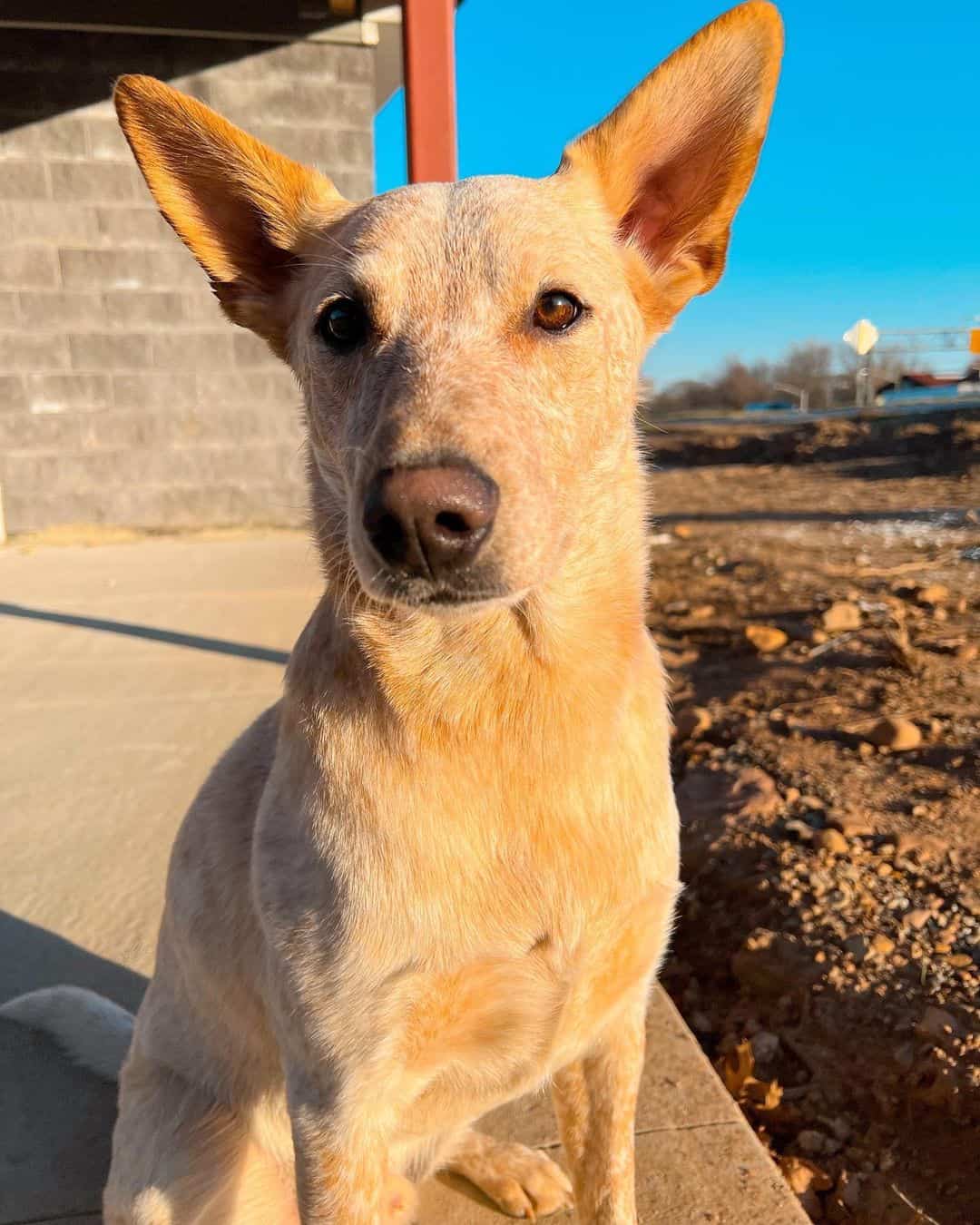
Photo from: @everest.the.heeler
Most dog owners will agree that this is one of the best dog crosses, as both Golden Retrievers and Australian Cattle dogs possess the tremendous qualities of both working dogs and family companions.
These mixed puppies rarely inherit the coats and colors of Golden Retrievers, but you could still try to sport some cute Golden Retriever hairstyles.
Golden Retrievers are far from an aggressive breed, and the Golden Cattle canine shares this temperament with them, even though sometimes they might look a bit hostile during play.
This is mainly because of the high energy levels from the Blue Heeler heritage.
What you can expect from this mixed-breed canine is a devoted and loyal family dog that will do everything to make its owners happy.
9. Pit Heeler (Pitbull)
This is one of the newest additions to Australian Cattle dog mixes. Not much is known about them yet, except their physical appearance and general temperament traits that are noticed by breeders and owners of this cross.
These pups have a sturdy build and are muscular, just like their ancestors.
Their ears are specific in that they’re separated quite far apart, and the points of the ears raise immediately when they feel any kind of threat or danger.
The Pit Heeler is usually a low shedder, just like a Pitbull, but in terms of coat shades, they definitely resemble Heelers more.
When it comes to their weight and height, these canines can be described as medium-sized, which is a joint characteristic of both parent breeds.
The majority of Pitbull mix puppies share the same or similar facial characteristics, and that includes Pit Heelers as well.
Pit Heelers are energetic dogs that thrive on the companionship of other pooches. They have a strong desire to be around other people and animals, and the more company there is, the better.
10. Heeler Pei (Shar Pei)
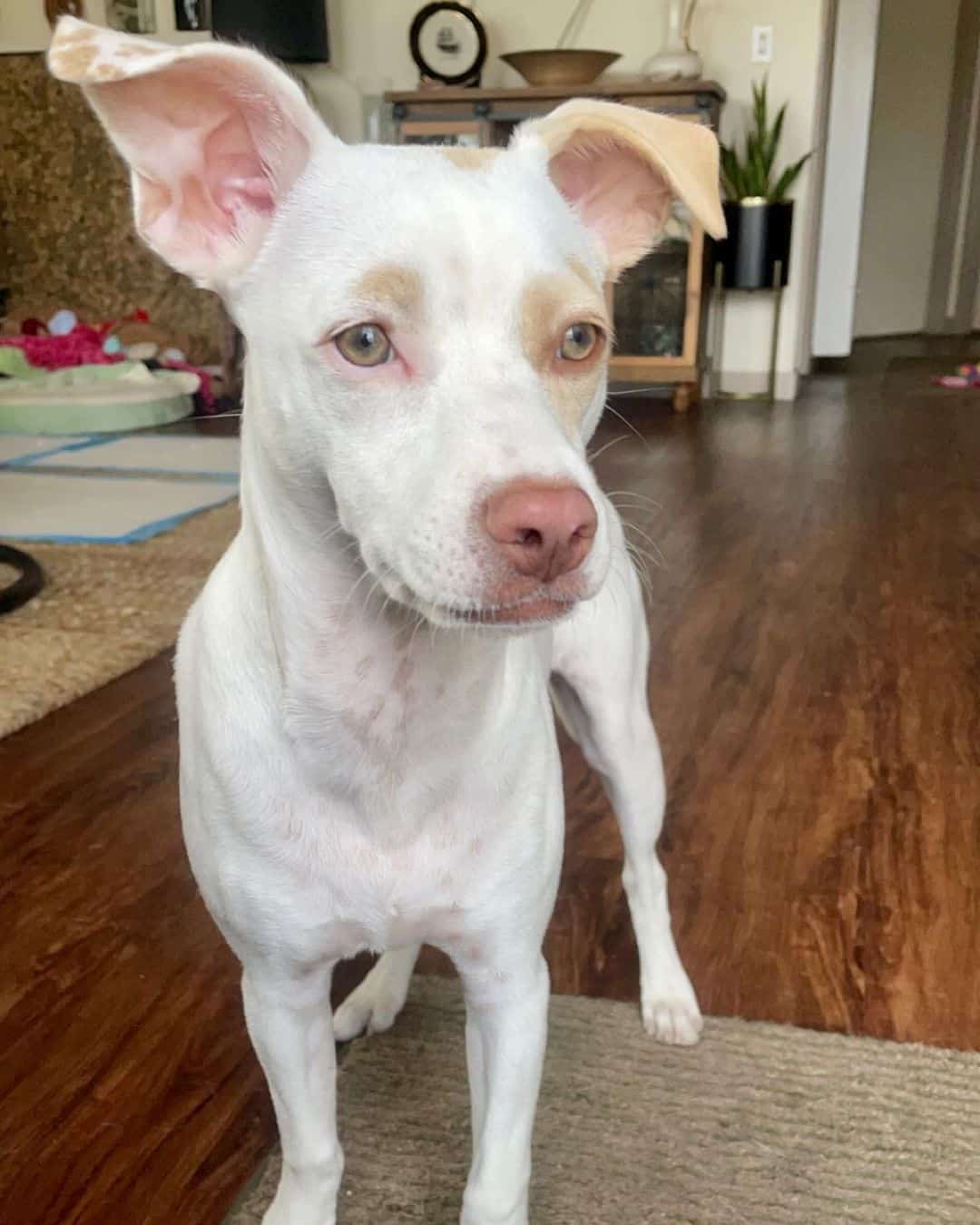
Photo from: @missktfish
The Heeler Pei is proud of its prestigious ancestry, which includes the uncommon Chinese Shar-Pei as one of its parents and the Australian Cattle dog as the other.
Both of these purebred canines are regarded highly as good shepherd dogs. They have a natural talent for herding and have been doing it for many years, so this comes naturally to them.
Their mixed breed is a powerful canine with stocky legs and an overall appearance that can differ greatly, depending on which genes the crossbreed inherits.
The Heeler-Pei is a breed of dog that is recognized for being incredibly independent, watchful and mild-mannered towards members of the household.
Yet this calm demeanor can quickly transform into a vicious rage if confronted with unknown individuals or settings.
If you like Shar Pei, read our article on some other interesting Shar Pei mixes!
RELATED: Bear Coat Shar-Pei: A Teddy Bear Dog That’s Right For You?
11. Cattle Collie (Collie)
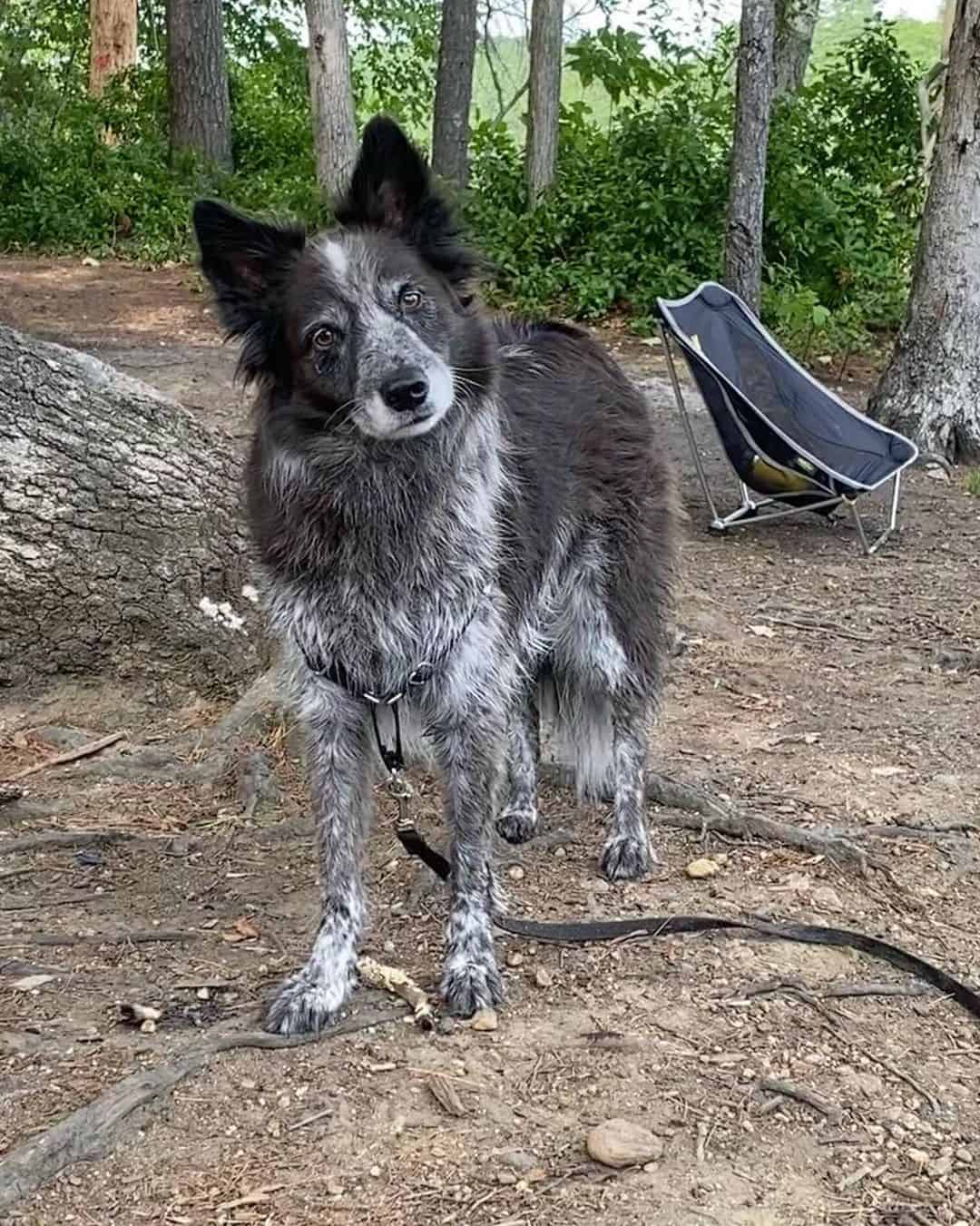
Photo from: @nuniesue
This is one of the rare Blue Heeler mix puppies resulting from crossing this breed with a Collie.
It’s still not completely clear where this designer dog came from, but one of the hypotheses is that these pups were produced for fashion.
Both canine breeds have robust and stocky body frames, so there’s a high chance the creators wanted their best qualities to be presented in one canine.
The test was successful, and the crossbreed was found to be an appealing herder who possessed strong instincts and was in pretty excellent condition.
Because of its perceptive and alert demeanor, the Cattle Collie is an excellent furry buddy.
On the other hand, this mix requires a substantial area to function properly and does best in spacious environments.
Therefore, it would be detrimental to their health to confine them in a small home.
12. Blue Cadoodle (Poodle)
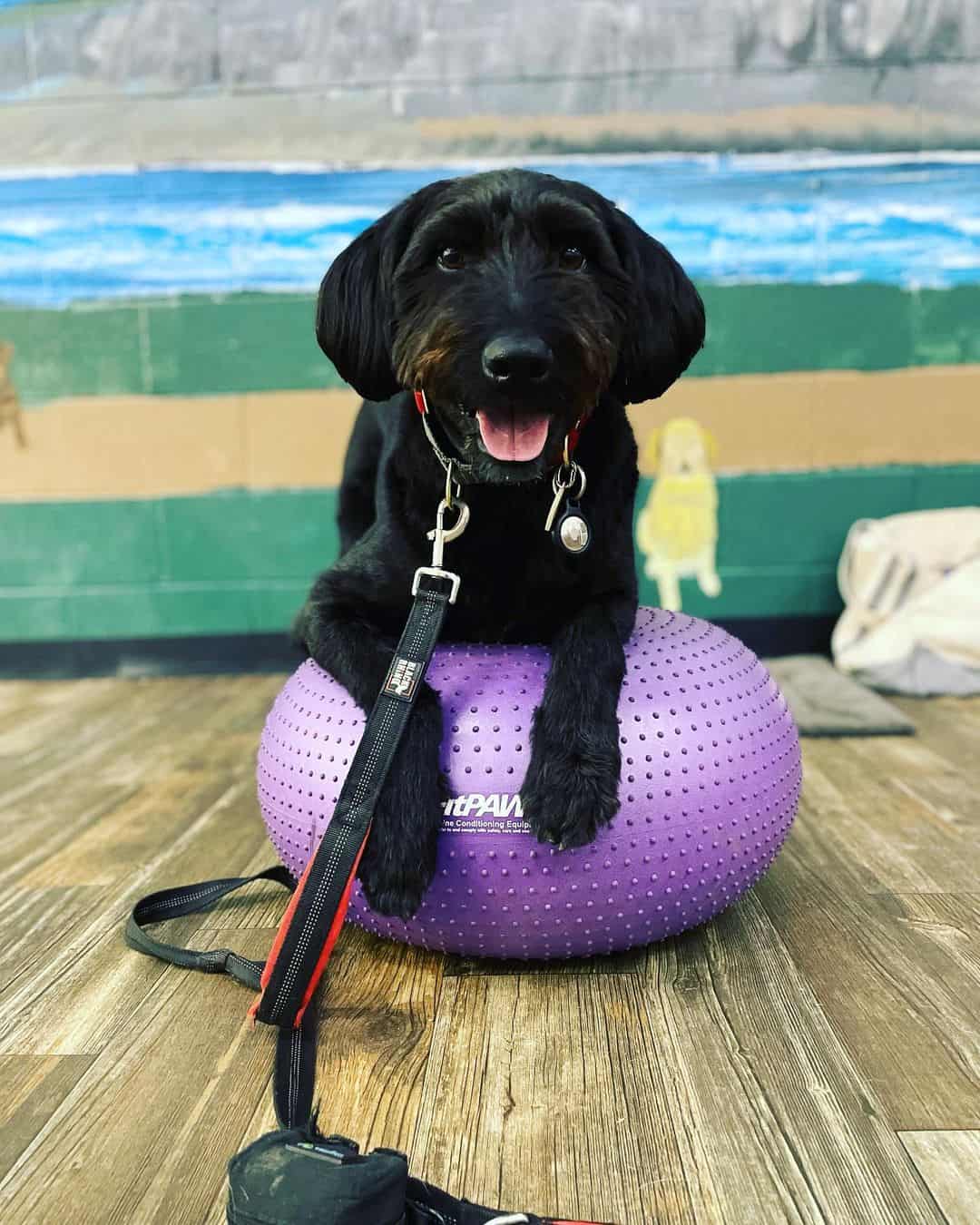
Photo from: @wall_and_oats
This is one of the best doodle breeds and a perfect match for a furry companion which will never leave its owner’s side.
They might not be as popular as Pit Heelers and some other mixed breeds from this list, but that doesn’t reduce their value.
These pups usually inherit the coat color genes from the Blue Heeler dogs, but they do have longer coat hair, so you can still try out some of the cute Poodle hairstyles on them.
One of the best things about these pups is the fact that they are hypoallergenic, just like Poodles which are known as low shedders.
If you go for a Cadoodle, you’ll get a canine with amazing intellectual abilities, which enables owners to train them easily.
13. Basset Heeler (Basset Hound)
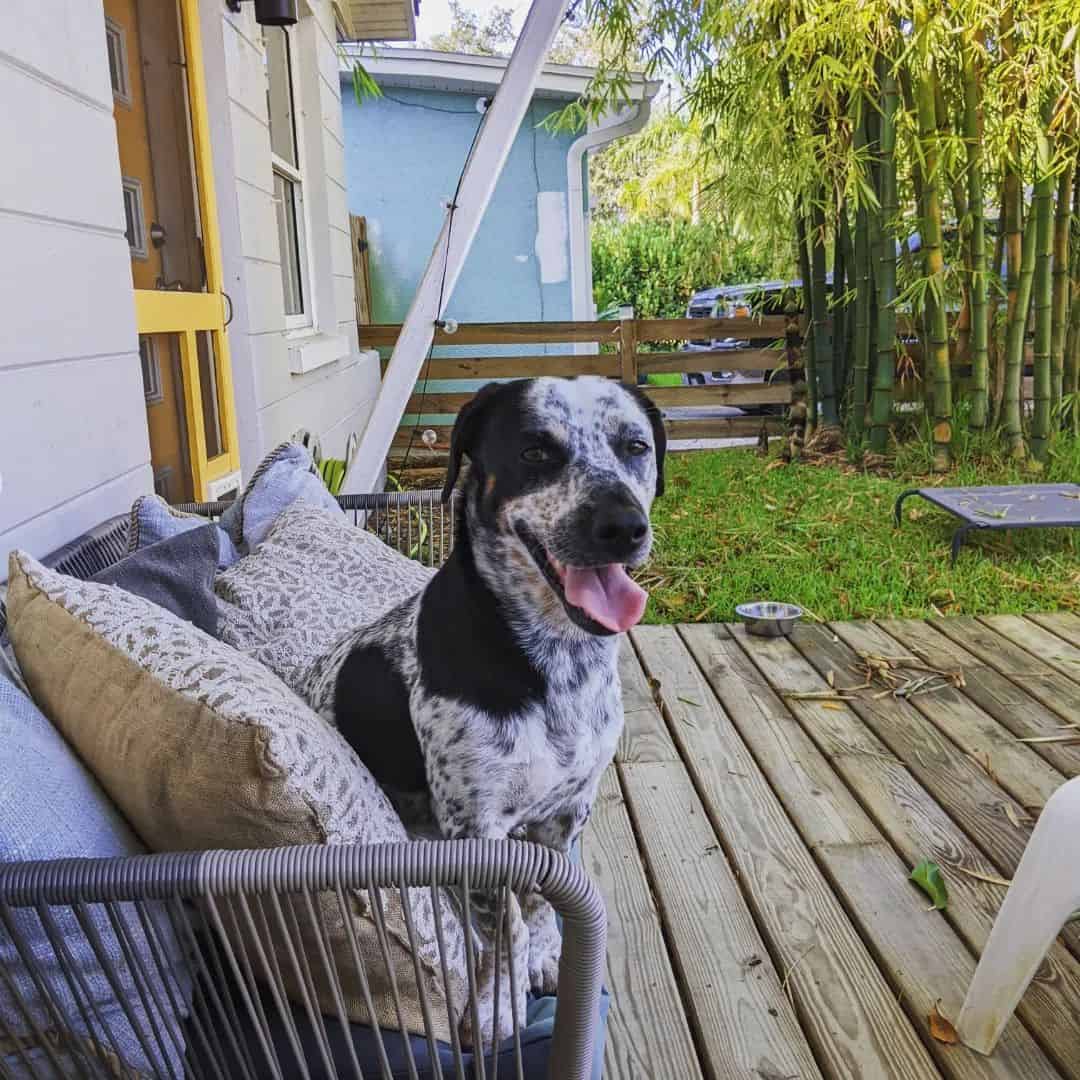
Photo from: @felixthefreckledrescue
This breed could be described as a rather uncommon Basset Hound and Australian Cattle dog mix, but just because they’re not common doesn’t mean they don’t exist at all.
This cross is a very clever Heeler that needs enough daily training, including physical strength exercises and mental stimulation.
They share a few traits with Basset Hounds, mainly when it comes to temperament, while they’re reminiscent of Blue Heelers in terms of body shape and physical appearance.
Basset Hounds have a shorter life expectancy than Blue Heelers, but fortunately, the mixed breed inherits this trait from the latter.
Even with training, these pups might sense the need to prevent outsiders from getting near their families just because they love them so much.
14. Labraheeler (Labrador Retriever)
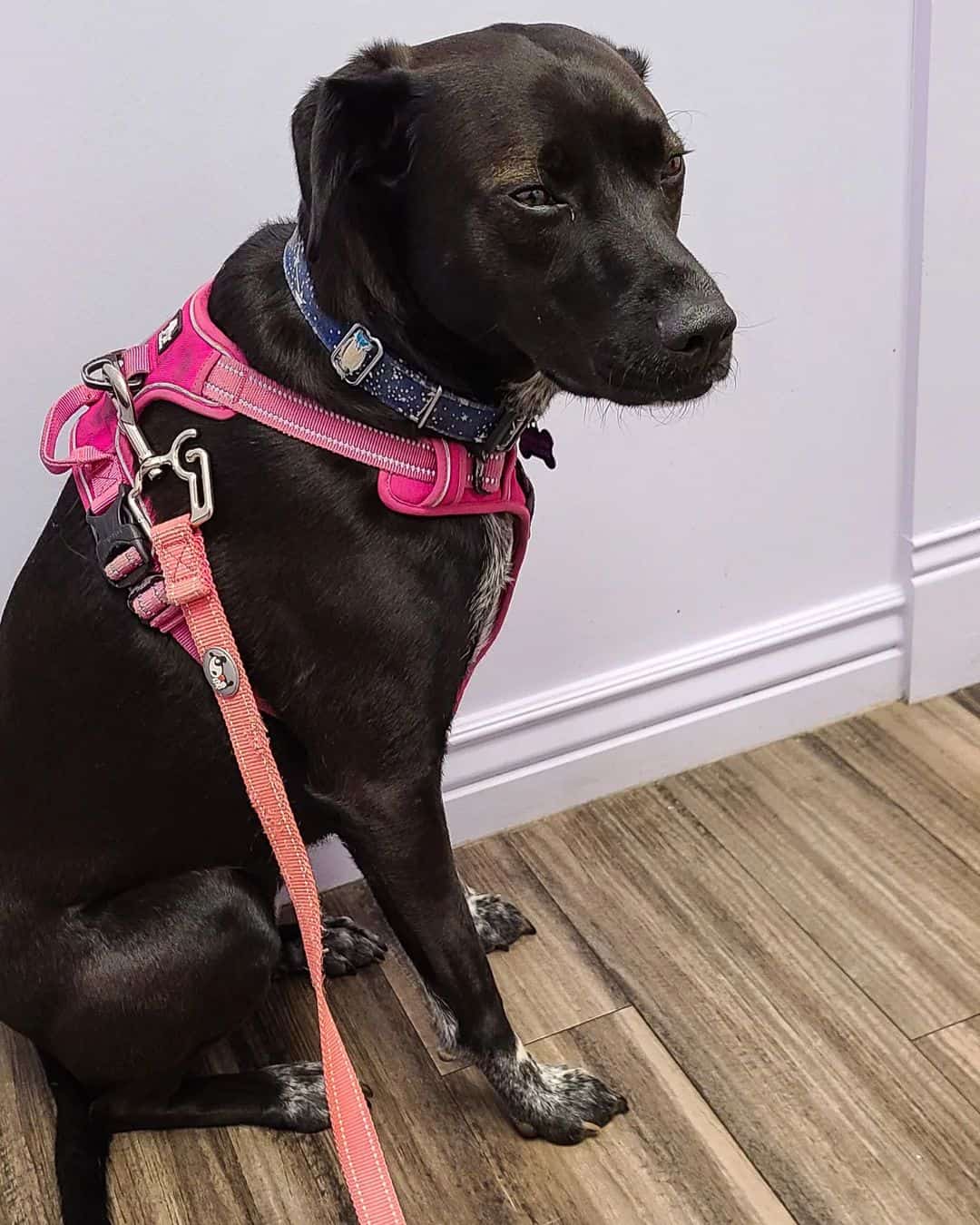
Photo from: @the_marvelous_miss_mira
The Labraheeler is a beautiful dog that is a result of combining a Blue Heeler with a Labrador Retriever to create an adorable doggie.
This heeler hybrid shares the characteristics of companion canines rather than a working breed, in contrast to its parent breeds that have a famous reputation as some of the best working dogs.
In other words, the cross puppies of Labs and Heelers are fantastic companions for activities such as walking, running, or trekking.
They might not be the friendliest pooches toward strangers but won’t take a long time to become their best buddies.
Labraheelers are excellent family pets but keep in mind that they will shed quite a lot, a trait they inherited from both Blue Heelers and Labs.
Also, this crossbreed is quite attached to its owner, so don’t be surprised if you notice your pup takes a spot in the bed right next to you.
15. Boston Cattle Dog
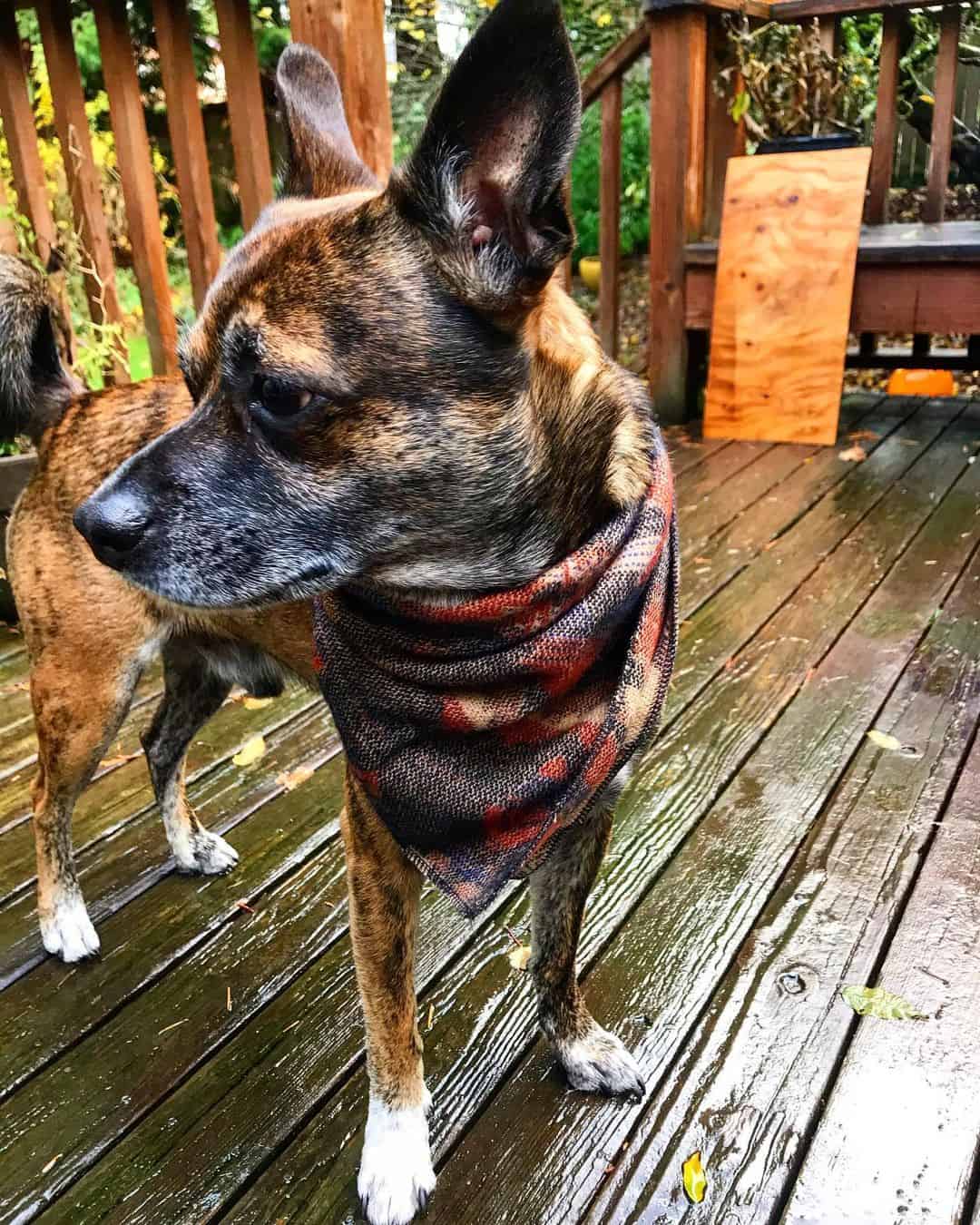
Photo from: @willcook4_
This is a powerful mix of a sturdy, muscular Boston Terrier and a medium-sized but well-built ACD. This type of crossbreed is suitable for herding and adventures.
Boston Terriers might not be big in size, but their body has a strong frame inherited by its cross with the Blue Heeler.
This Blue Heeler Boston Terrier mix is a stout-built canine, much like its parents, but in addition, is lively and a bit strong-willed.
The intelligence of a Boston Cattle Dog is above average. However, this might be slightly challenging for obedience training, especially if not practiced from early puppyhood.
Still, there’s a chance for you to gain power over a Boston Cattle dog if you show authority from the first day of your mutual life.
Save the best for last, they say. Unfortunately, the news I’m about to bring you isn’t really the best you’ll hear but can serve as a warning.
Many people think that Boston Cattles are hypoallergenic, but they’re not. Neither are Boston Terriers, so if you have an allergic reaction to canines, you should think about getting another pup.
16. Border Heeler (Border Collie)
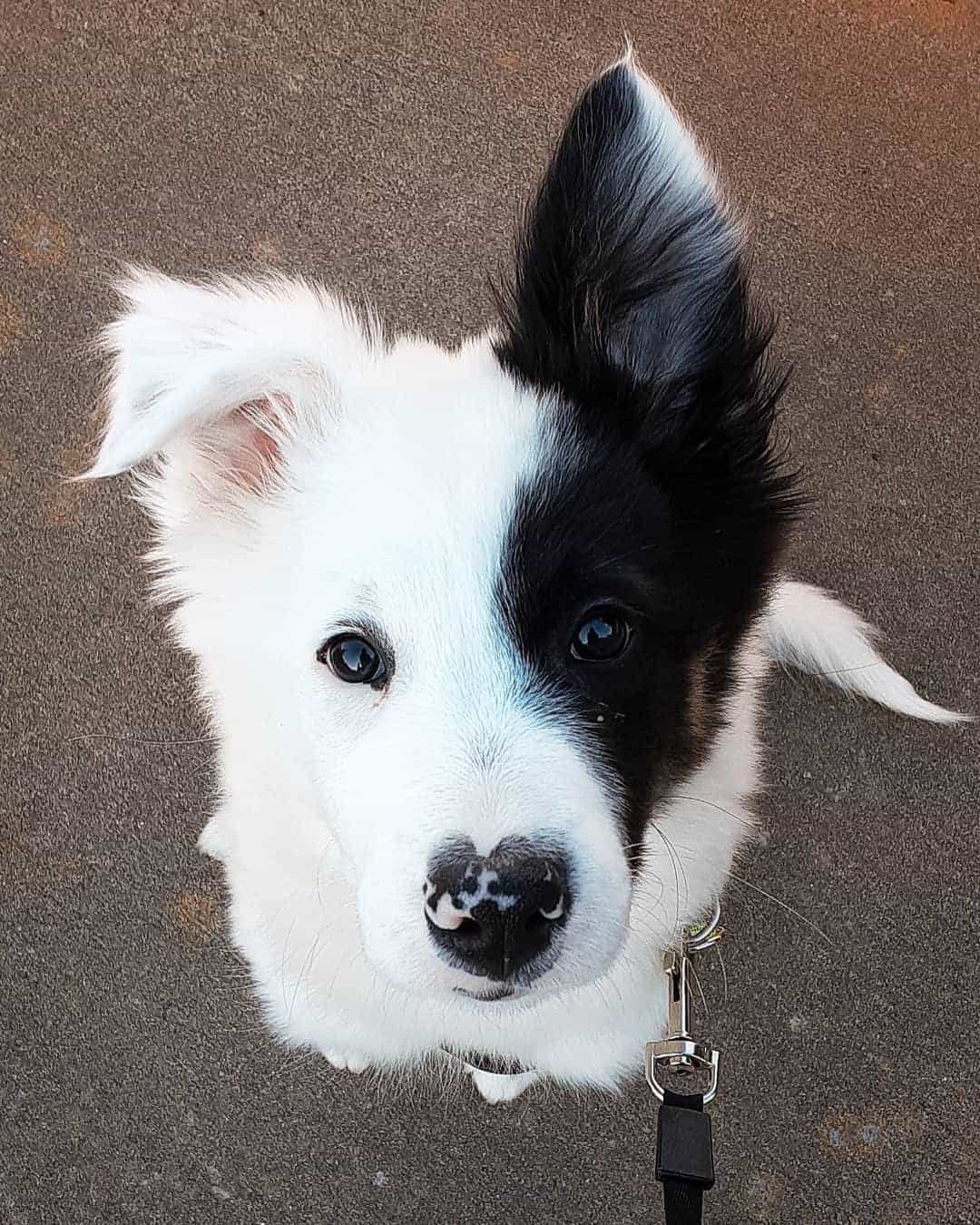
Photo from: @shotothecolliemix
Border Heelers have the potential to be the best herding dogs in the world.
The Border Collie and the ACD, two of the best herders in the world, were used in this combination, so it’s not hard to understand why.
However, the traits that both parent breeds possess might be one of the reasons why you can expect an overly energetic pup that will require a lot of exercise.
These canines exhibit the most desirable characteristics of both breeds, combining the intellect and guarding skills of the Border Collie with the ferocious loyalty and defensive instincts of the Blue Heeler.
When it comes to the ACD and Border Collie mix looks, these pups are more likely to inherit the Blue Heeler’s double coat and their colors.
However, this might differ from one dog to the next, and in certain instances, there could be spots of the coat hair that also resemble Border Collie’s shades.
17. Bernese Cattle Dog (Bernese Mountain Dog)
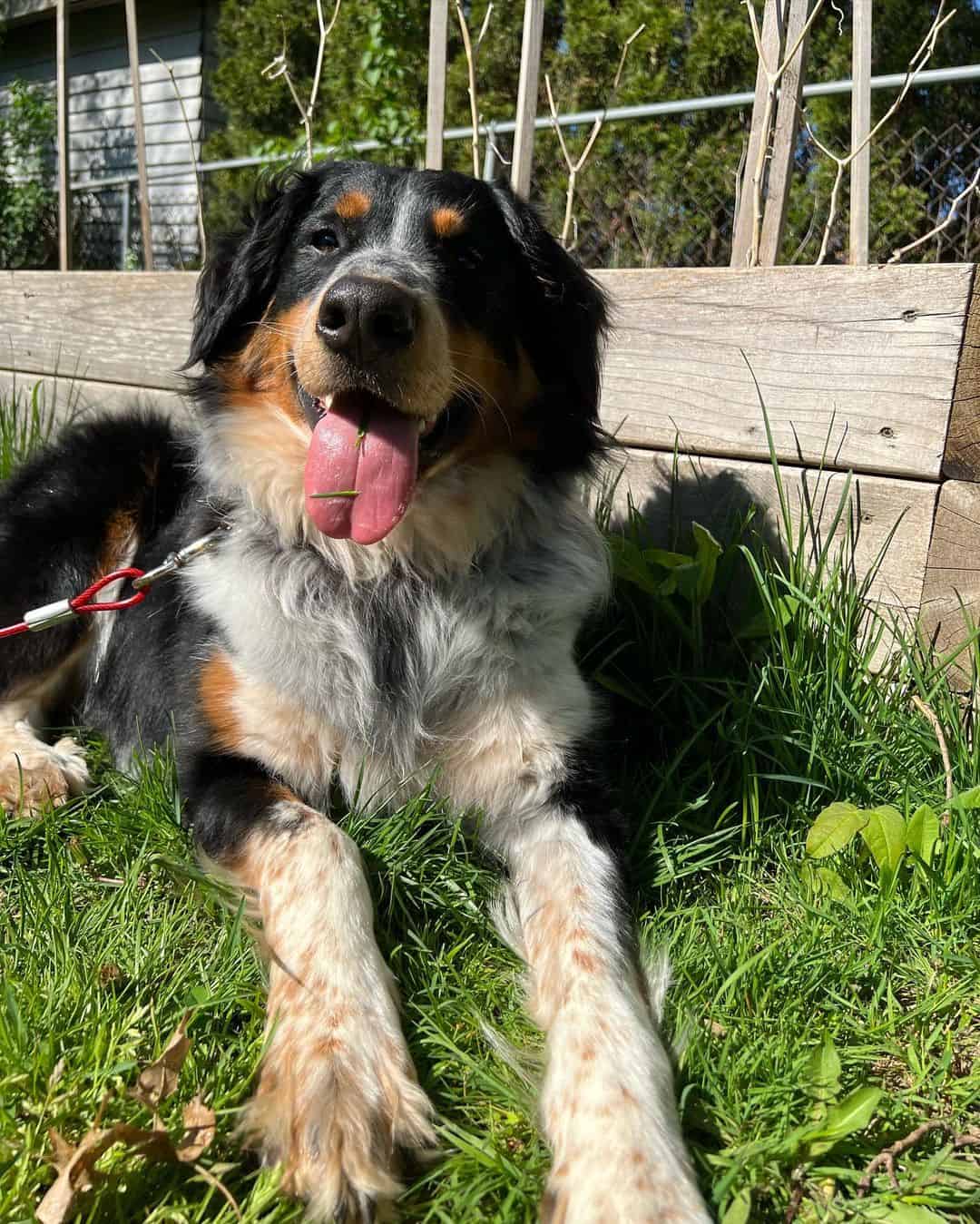
Photo from: @fritzandfriendz20
The main purpose of creating this designer breed was to combine the best personality traits of the ACD and the Bernese Mountain Dog in one pup.
Essentially, this type of pup contains characteristics of both breeds, but it’s almost impossible to get the same results from every breeding.
Therefore, the temperament of the Bernese Cattle Dogs might vary depending on the genes they inherit. However, several general traits are shared among the majority of ACD and Bernese crosses.
First of all, they possess warm personalities and are great with small children, just like their parent breeds. These pups also have highly developed intelligence, which enables them to learn new things quickly.
A lot of people agree that this mix resembles a Bernese more than ACDs. They are also less expensive than the Bernese Mountain Dogs,, even though it’s really difficult to find a breeder of this cross.
READ NEXT: Best Bernese Mountain Dog Breeders In The States
18. Corgi Cattle Dog (Welsh Corgi)
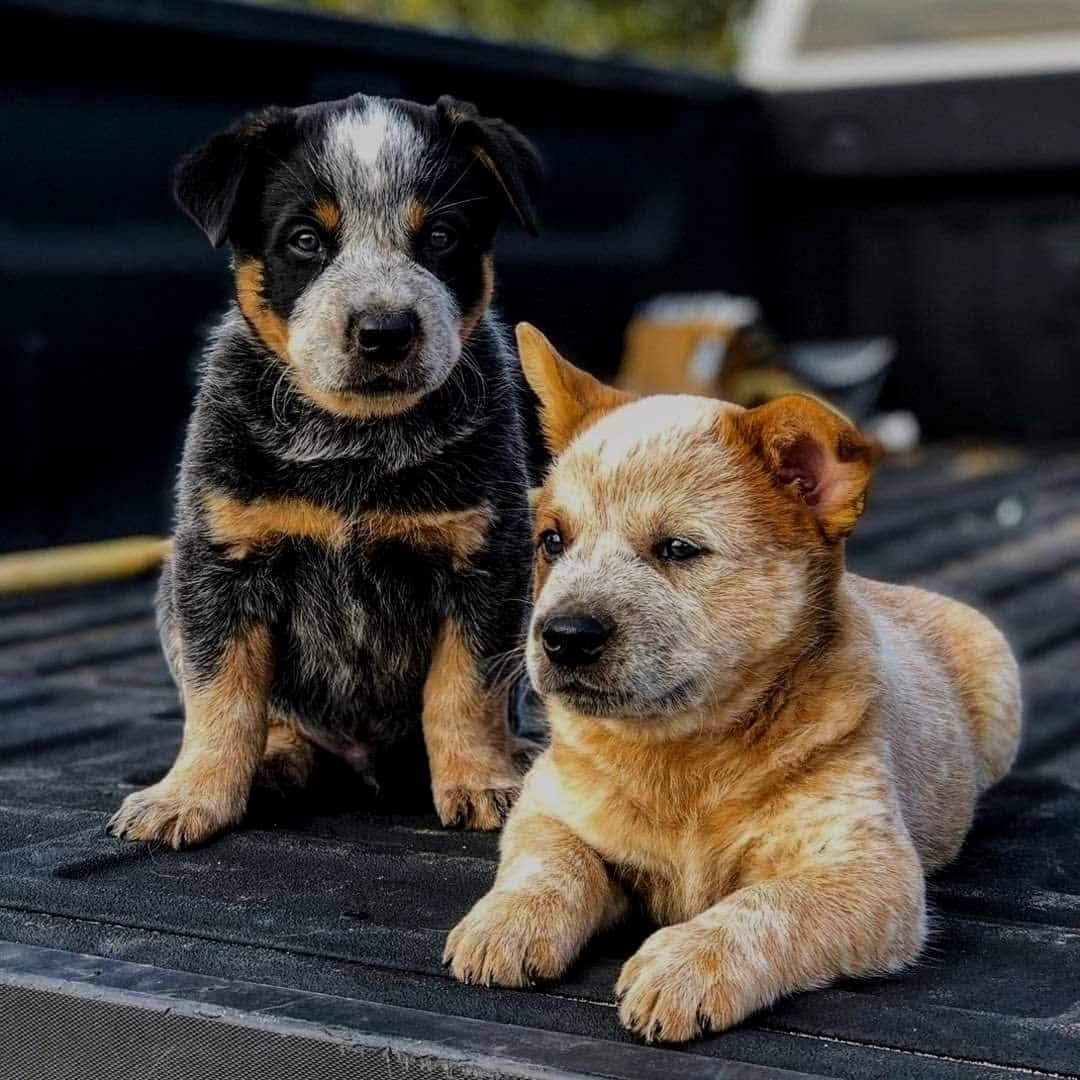
Photo from: @aus.cattle.dog
I have to admit this is one of the most adorable Blue Heeler mixes I’ve come across so far, although it’s really difficult to choose which cross is the sweetest.
A cute Corgi and a lively Blue Heeler seem like an unusual combination, although they’re perfect for creating a fantastic hybrid dog.
A Heeler combination like this one has an extra herding superpower created by incorporating two of the most successful breeds in the herding business.
This ACD and Corgi cross might have short legs and a peaceful nature, but they will definitely require you to be active and offer them enough outdoor activities every day.
Just like most of the breeds on this list, Corgis aren’t hypoallergenic either, so this is another mixed-breed to cross off the list if you’re allergic to dog hair.
19. Blue Spaniel
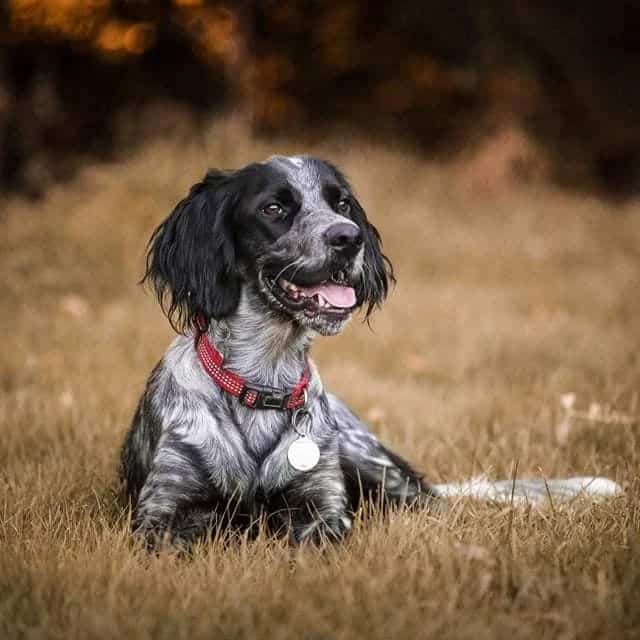
Photo form: @riplay_the_rocket
Can you imagine a pup with the head shape of an Australian Cattle Dog and the long, beautiful fur of a Cocker Spaniel?
Well, someone imagined it, which is why they created the Blue Spaniel, a mix of two wonderful and versatile breeds.
The shiny and wavy coat, which is a part of the heritage of Spaniels, has to be groomed on a regular basis because the mixed breed puppy sheds just as much as its parent breed, the Cocker Spaniel.
The Blue Spaniel is a canine that places a high priority on human interaction and displays devotion to its close family.
However, there is a risk that the hybrid will attack different dog breeds or other animals, particularly those that are smaller than them.
Please remember that this is because their instincts for hunting and farming were passed down from their ancestors.
RELATED: Are Cocker Spaniels Aggressive And How To Deal With Such Behavior
20. Ausky (Siberian Husky)
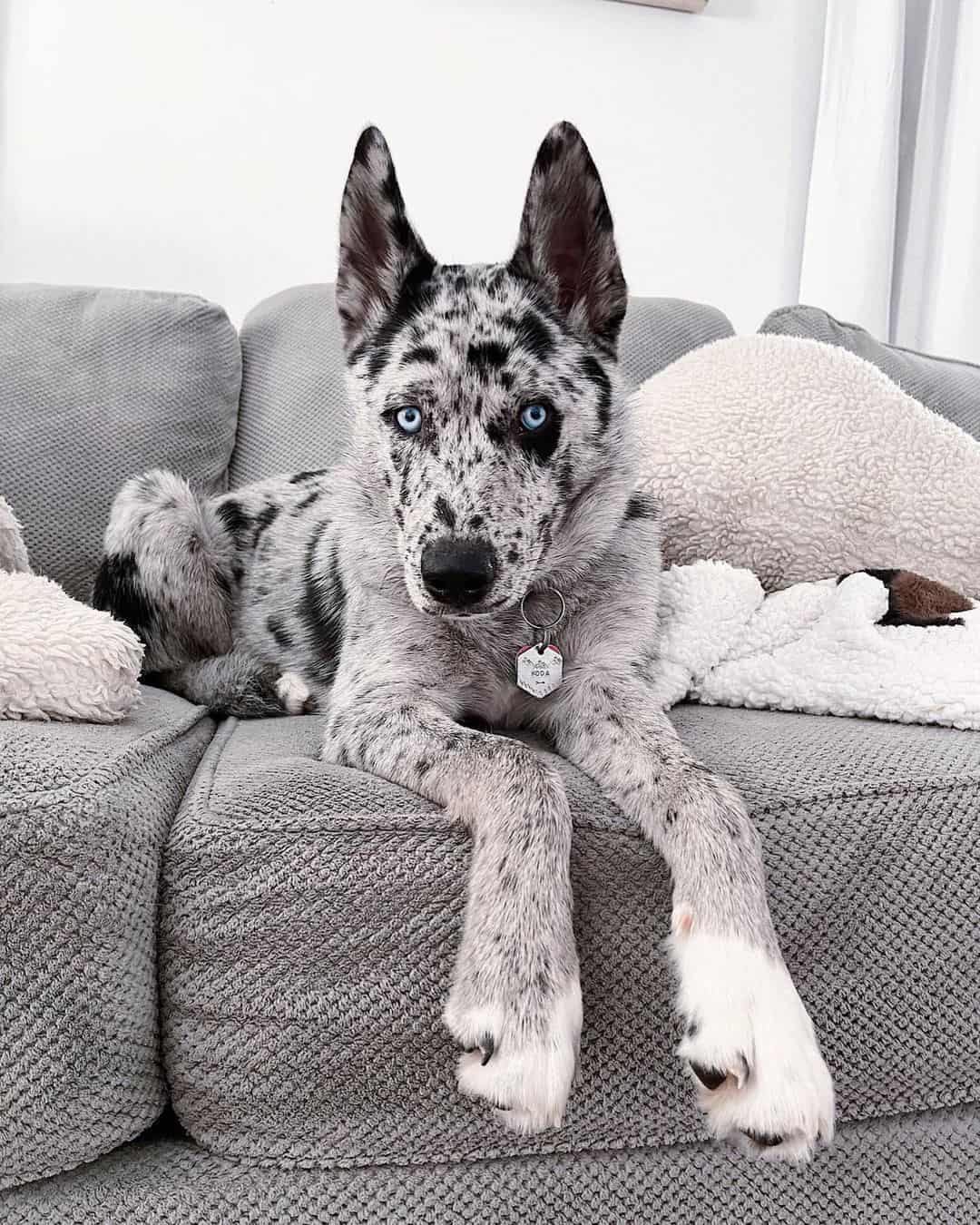
Photo from: @koda_and_cream
This crossbreed is a perfect match for hikers and adventurers looking for a canine that can keep up with them on a daily basis.
Auskies surely won’t have any problems fulfilling this request, as they inherit the high energy levels from both of their parent breeds, Siberian Huskies and ACDs.
Keep in mind that this crossbreed has to be trained in order to interact with people and other animals.
Blue Heelers nor Huskies are usually aggressive but might show some undesirable behavior patterns if they’re not trained to do the opposite.
If they’re not socialized during their early puppyhood, Auskies might show certain signs of hostility, especially towards strangers and unfamiliar animals.
This type of canine isn’t recommended for families with small kids or other small pets who might easily become submissive to the Ausky, even if they can control their instincts with proper training.
21. Doxie Heeler (Dachshund)
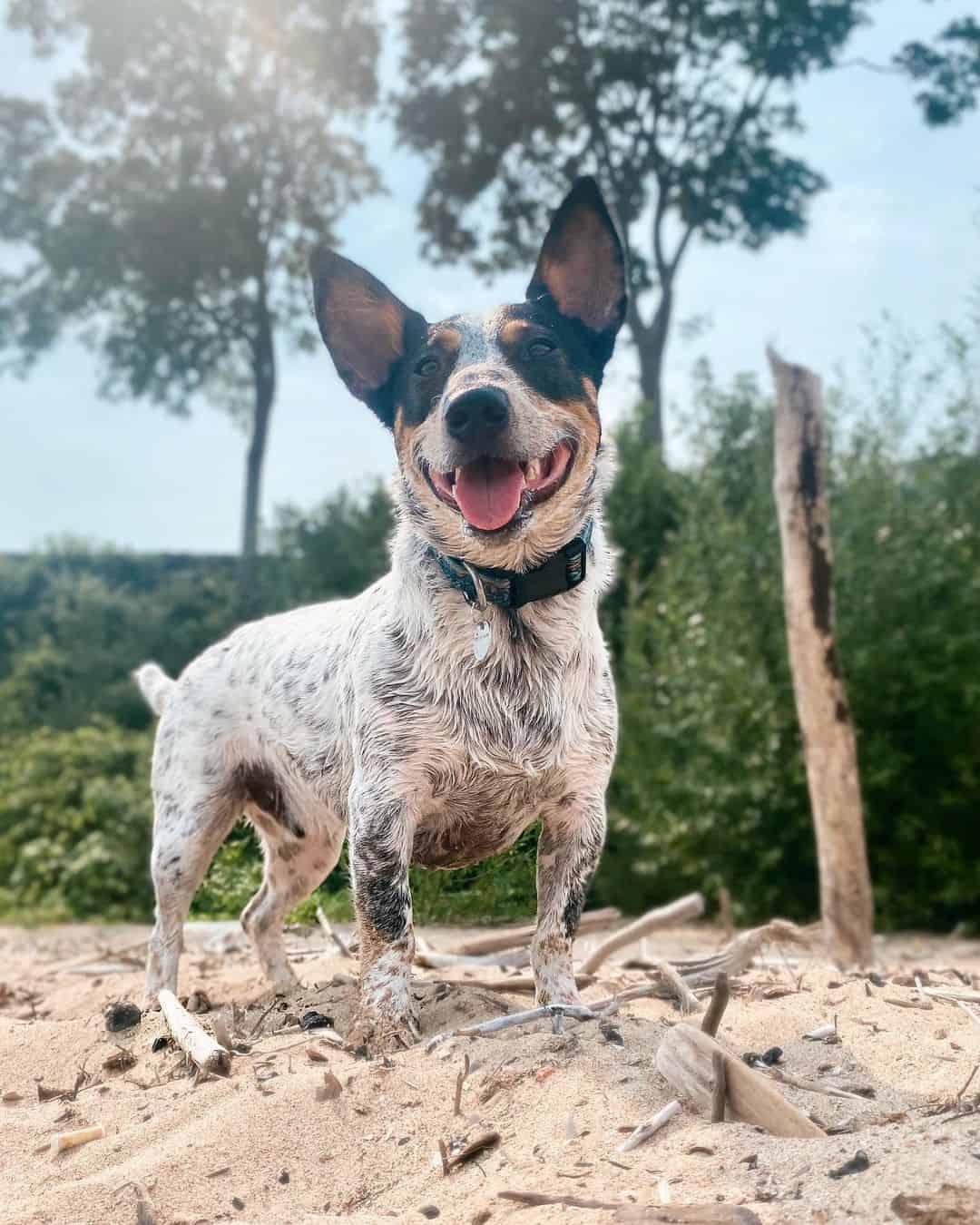
Photo from: @mr.ace_hole
The Doxie Heeler is a hybrid dog that was created by crossing the Blue Heeler with the Daschund.
The physical structure of these canines is comparable to that of the Dachshund, but they also have certain characteristics in common with the Heeler.
They are little canines with long bodies. Their coats are colored in Dachshund’s shades in most cases, but there might be certain pups with blue and white speckles.
Doxie Heelers are known to be kind and loving when it comes to the people they enjoy and live with.
They are wonderful friends but have the potential to be hostile any time they feel some kind of a danger to their safety.
Dachshunds use barking as their first defense, and their Blue Heeler cross does the same; therefore, don’t be surprised if your pup starts barking loudly as soon as someone comes near them.
They are reserved about people they do not know well and require early socialization in order to be comfortable among visitors and other animals.
22. Sheltie Heeler (Shetland Sheepdog)
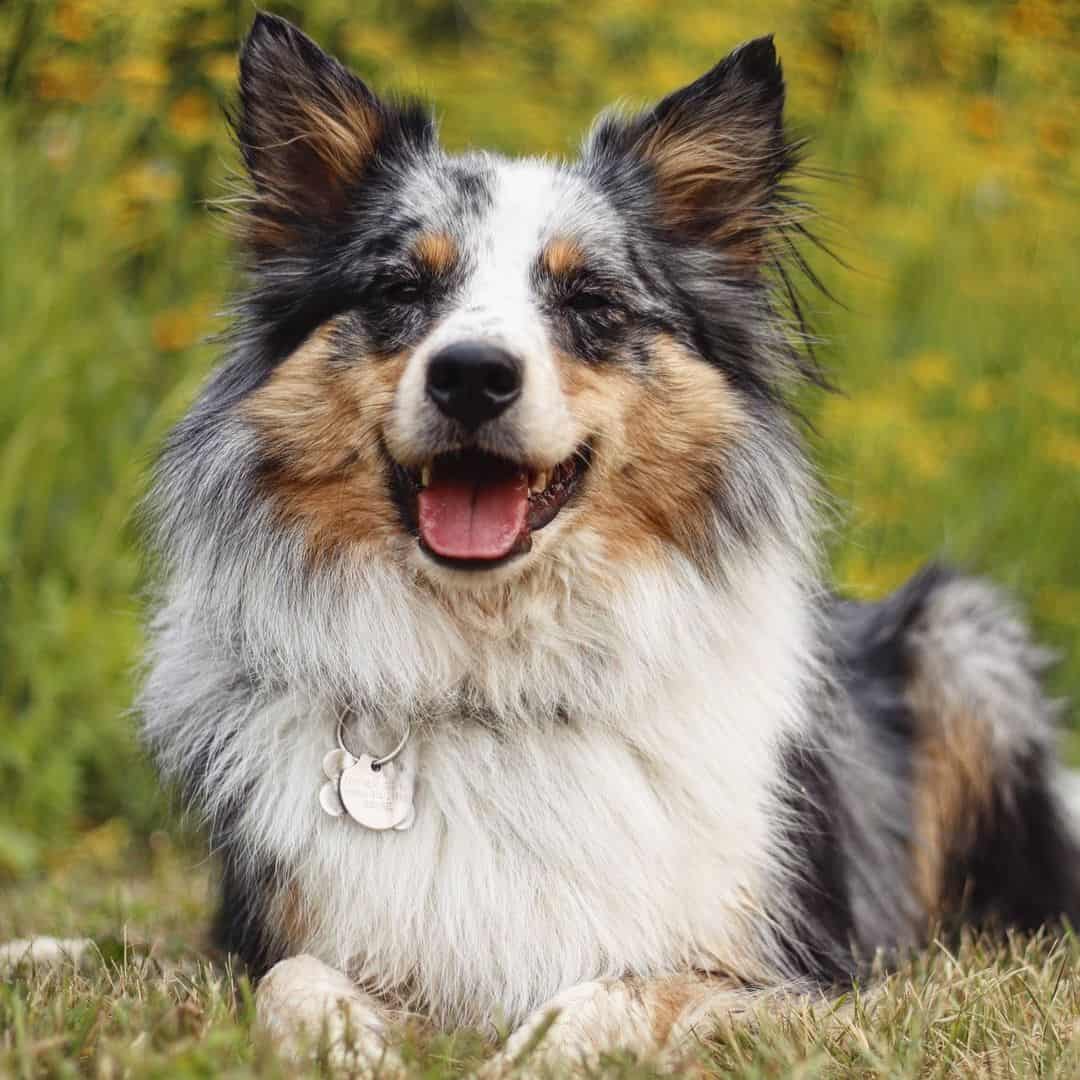
Photo from: @stellathefurbabe
The Blue Heeler and the Shetland Sheepdog both contributed to the creation of a unique pup known as the Sheltie Heeler.
This beautiful mixture has doe-like eyes and a face that appears perplexed, giving it the appearance that it is up to no good most of the time.
Sheltie Heelers are high-energy dogs that are known for their amiable personality and lively nature.
Because of its Sheltie and Heeler heritage, the Sheltie Heeler tends to be overprotective and even hostile when it perceives an imminent danger.
23. Blueweiler (Rottweiler)
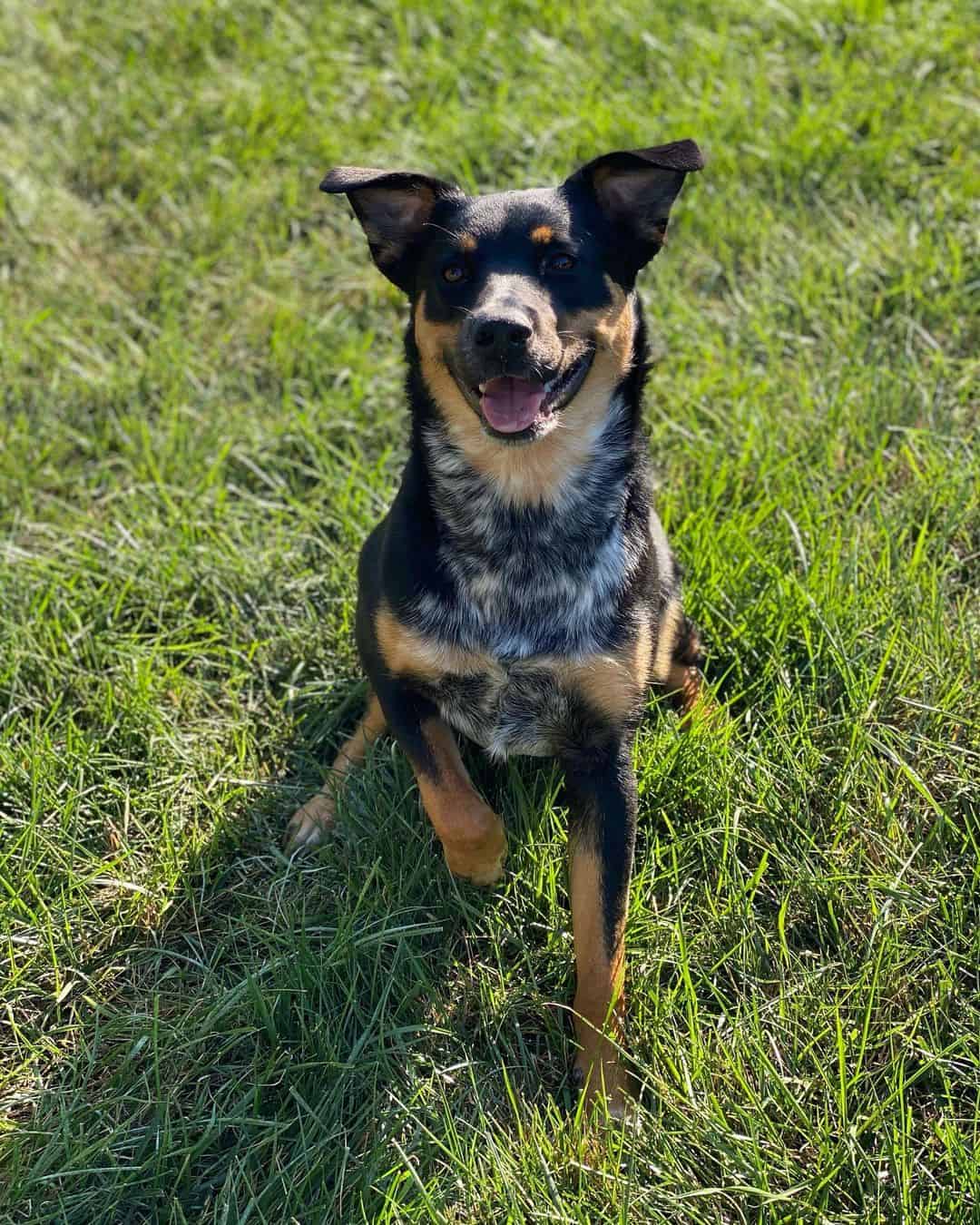
Photo from: @zeke_maxamillion
This is one of the best guard dogs among all the crossbreeds on this list (except for the German Shepherd mix, I’d say).
However, they might be protective to the extent of trying to herd you and keep you in one place!
Still, nothing else could be expected from a cross of the Blue Heeler and the Rottweiler.
These pups aren’t aggressive and won’t do any harm, especially if they have undergone obedience and socialization training as young pups.
Still, a lot of people might find them quite hostile just because they‘re the descendants of Rottweilers, which are considered dangerous.
Also, ensure that you feed them high-quality dog food that won’t cause health issues such as obesity, which leads to elbow and hip dysplasia.
24. Chi-heeler (Chihuahua)
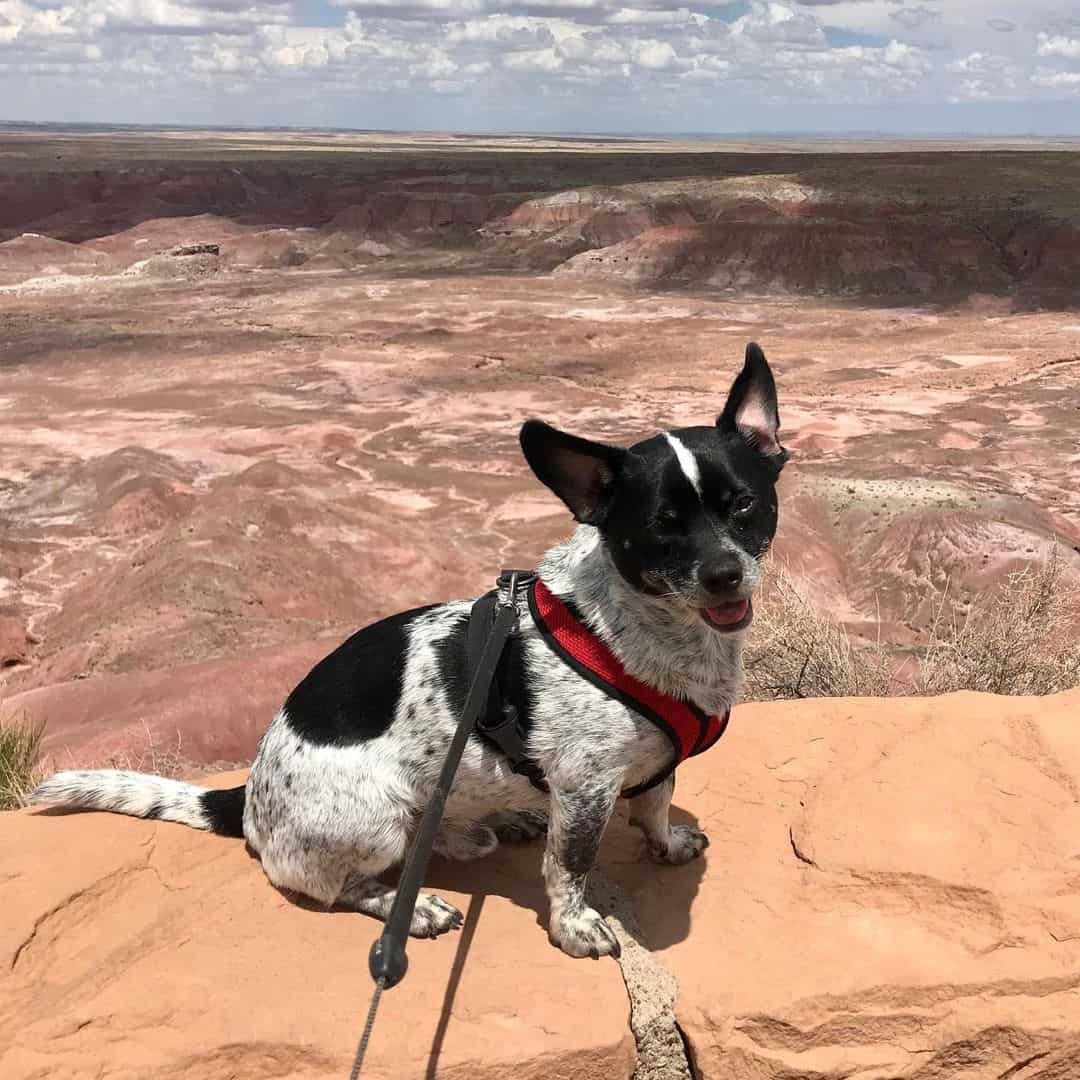
Photo from: @pepperchiheeler
This is one of the most unusual mixes on the list, considering that the ACD is at least three times bigger than a Chihuahua, making it really difficult to imagine what their hybrid would look like.
After you see the picture, you will notice that the Chi-heeler usually inherits the shades of Blue Heelers with various specks across the whole coat.
In most cases, crossbreeds take after the Blue Heeler parent more than the other parent breed in terms of physical appearance.
The same goes for Chi-heelers, up to the point that most people wouldn’t guess this was a Chihuahua mix unless they’ve recognized those pricked ears and tiny legs.
In terms of temperament, we all know that both male and female Chihuahuas can become a bit angry from time to time, and their mix isn’t far away.
These crossbred pups aren’t the best choice for inexperienced owners, but if they come into the right hands, they can be awesome pets.
25. French Bulldog And Blue Heeler Mix
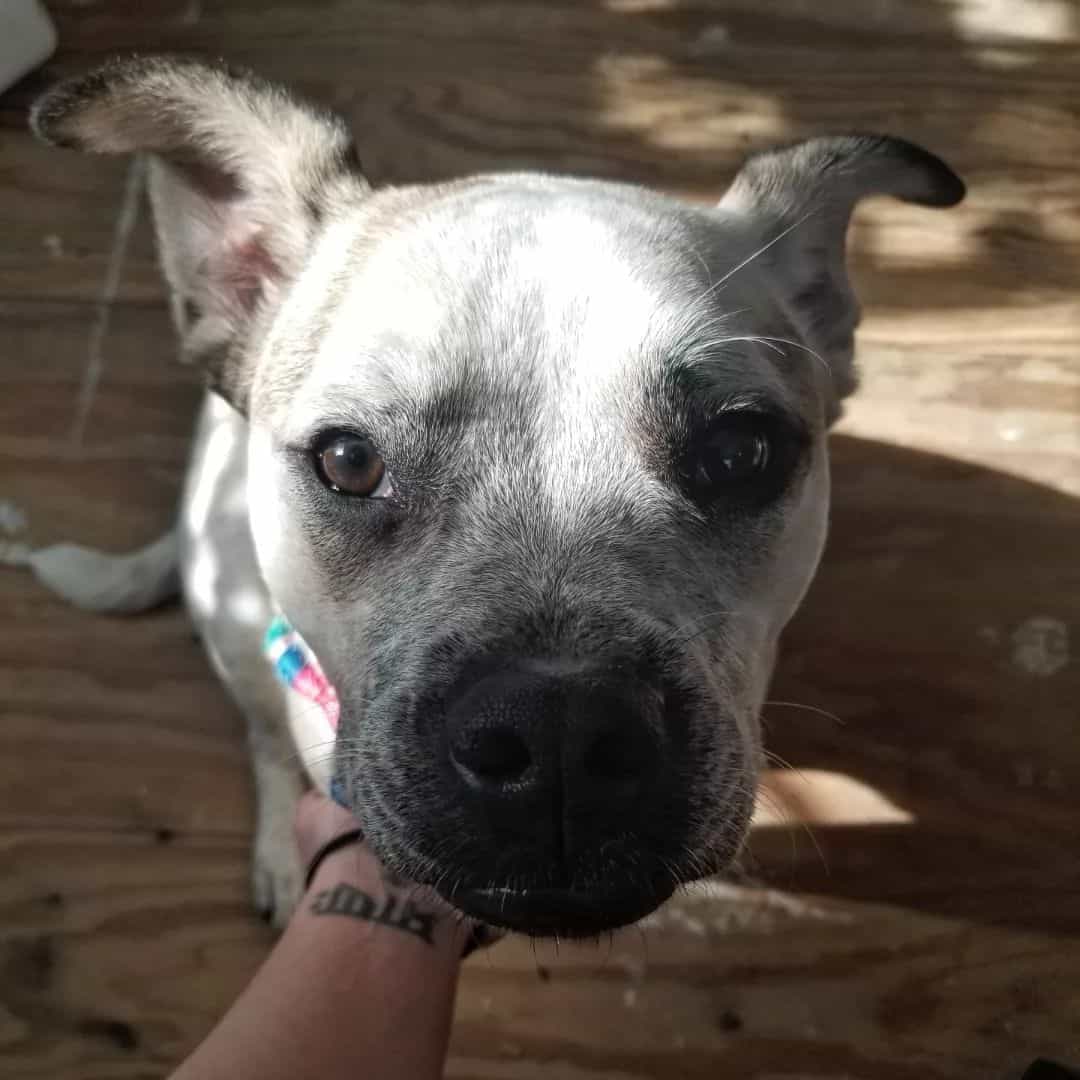
Photo from: @roscoe.plus.mabel
A combination of a Frenchie with a Blue Heeler can result only in a charming canine such as this crossbreed.
Even though this cross has strong herding and guarding instincts, they are far from aggressive canines, just like their parent breeds, ACDs and French Bulldogs.
The majority of the crossbred pups resemble Frenchies more than Heelers, especially with the shorter muzzle and wrinkles on their faces.
In terms of temperament, these pups are very affectionate and attached to their owners. Still they might not be so friendly to people they don’t know very well.
Therefore, these pups need to be trained as early as possible.
Positive reinforcement will help them respond well to all commands and practice during training.
26. Great Dane Blue Heeler Mix
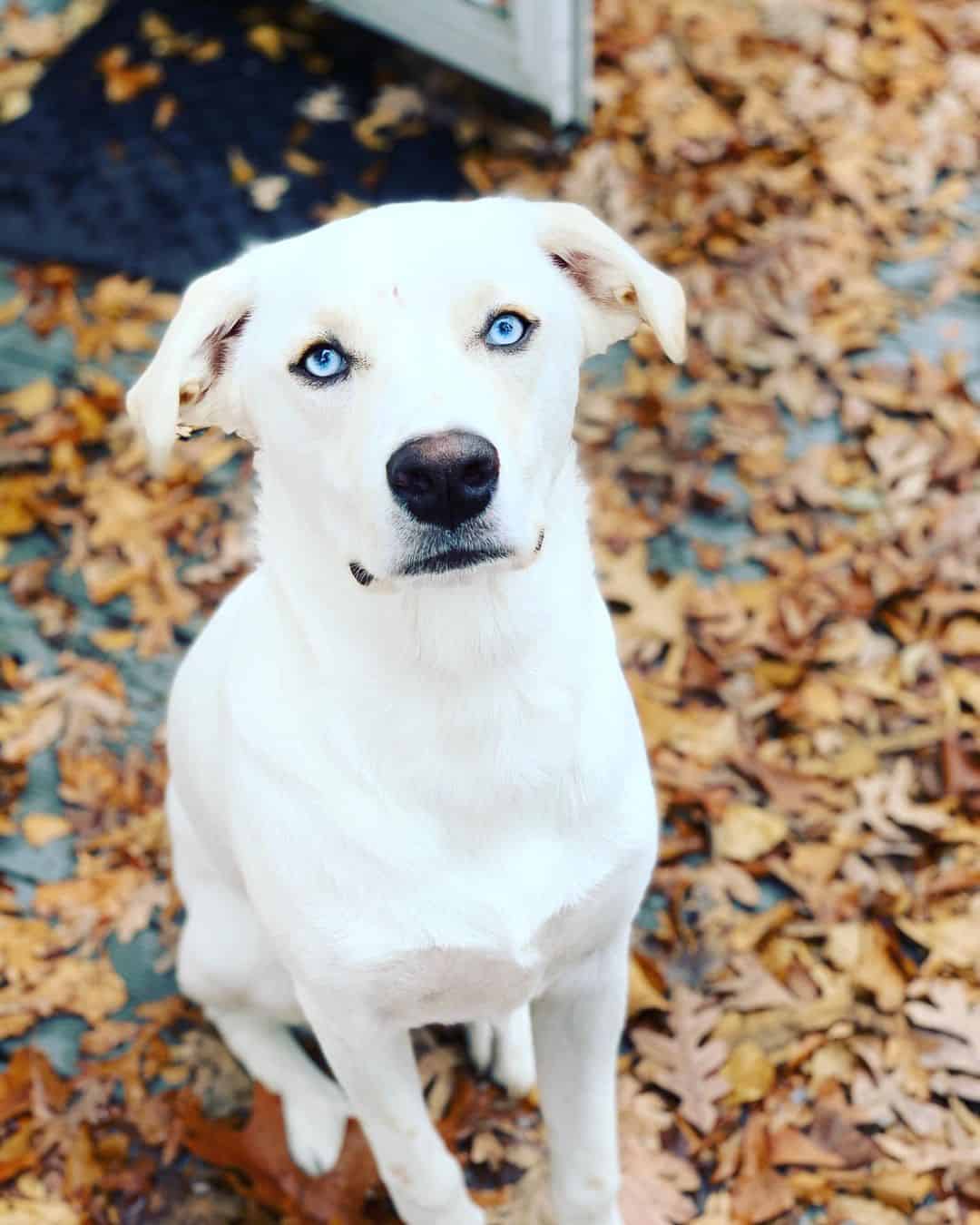
Photo from: @kristin_in_the_world
The Great Dane is one of the most popular dogs among the giant canines, but their cross with a Blue Heeler is quite uncommon and surprising for some.
The crossbreed between these two wonderful and distinctive canines is a big dog that can be either blue, grey, or even merle (mixed colors of both breeds).
The blue color isn’t just a part of the Blue Heeler heritage. Although they’re not very common, blue Great Danes do exist as well. Some even have a recessive gene that might not appear on their coats but can be passed on to the next generation.
This cross can make a good watchdog as it’s quite protective of its family, but they’re more open to strangers than Chi-Heelers or Auskies.
However, if you have a pet that is significantly smaller than this cross, be prepared for a lot of chasing around the house. Blue Heeler and Great Dane crossbreeds have a strong herding instinct towards small animals, so they’re probably not the best choice if you own a cat or any other smaller pet.
These pups are hard workers, but they know how to party, too. Even though they sometimes seem too serious, they do have that puppy energy deep inside.
27. Great Pyrenees Blue Heeler Mix
Here is another large breed cross that will steal your heart in a matter of seconds, especially if you prefer bigger pups!
The Great Pyrenees Blue Heeler Mix should be a robust and active dog, despite the fact that the look of mixed breeds can differ greatly from one another.
When it comes to their temperament, Great Pyr and Blue Heeler mixes are highly energetic canines, which is a result of having a strong herding instinct.
It’s interesting to notice that even though these pups look like ACDs, their coat types and colors are generally the heritage of Great Pyr pups.
For example, these crossbreeds will more often be colored in bicolor and tricolor shades and patterns, while the length of the coat may vary between short and medium hair.
Unfortunately, these pooches are great shedders like Great Pyrenees; therefore, if you have any symptoms of a dog allergy, it’s recommended to stay away from this crossbreed.
28. Blue Mastiff (Mastiff)
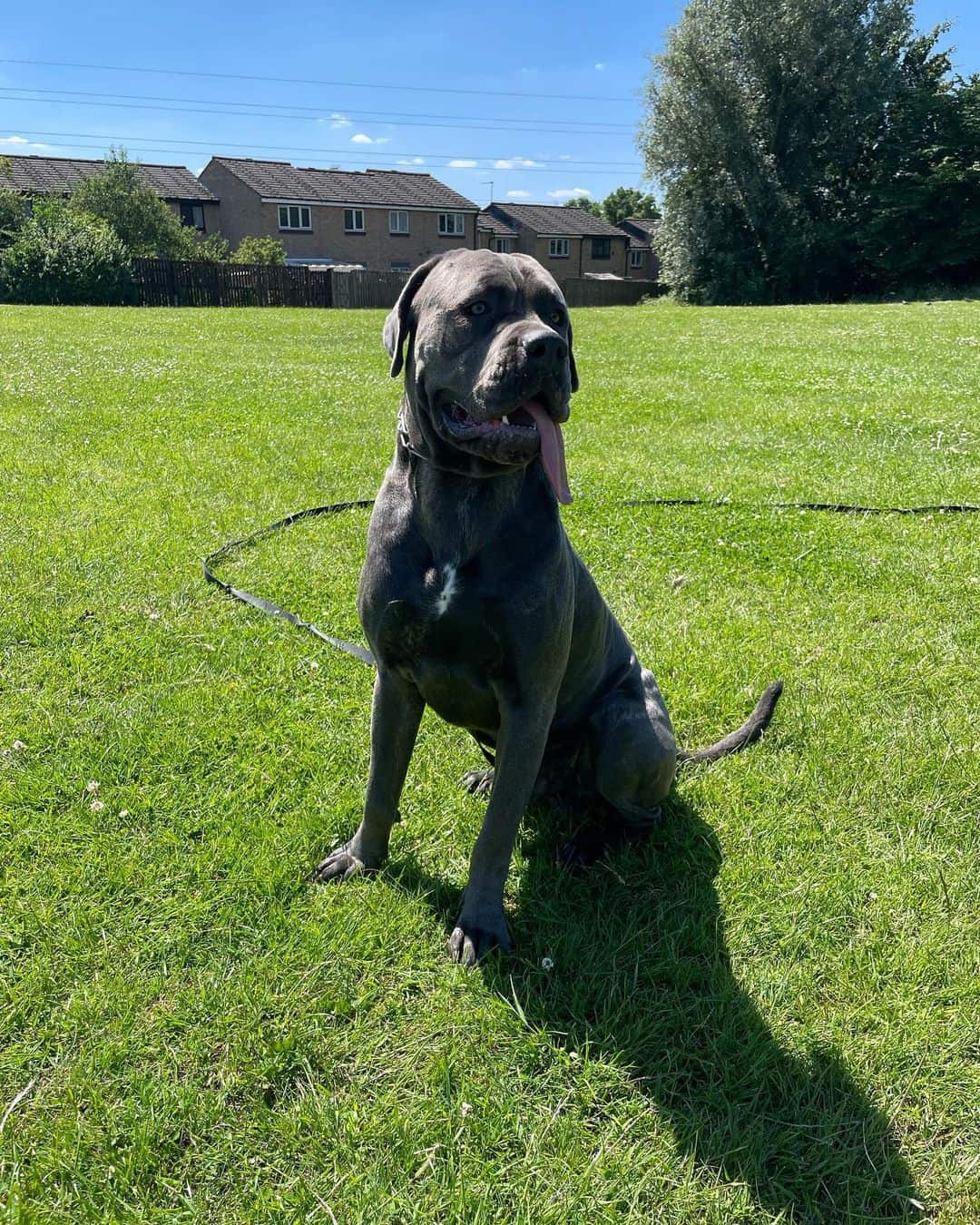
Photo from: @clyde_nera_thecanecorsos
This is one of the Blue Heeler mixes that is becoming more popular in the world of mixed-breed canines, even though it’s still far from a usual family pet.
These short-coated beauties might look a bit too serious, but that’s just because of their physical appearance, which includes a strong body frame, muscled back and legs, as well as the sincere look on their face.
They have great energy and love to spend time with their families, but they can also be very protective of them, so it’s important to socialize them with humans and other animals early on.
It’s difficult to say which traits will be inherited from which breed and in what ratio, but one thing is for sure – this mix will always be a great herding canine and a good fit for people who live on a farm.
29. English Setter Heeler (English Setter)
With great enthusiasm, I present you with one of the rare Blue Heeler mixes that are completely comfortable with strangers to the point that you can take them anywhere without fearing they might attack someone, be it by barking or nipping.
These canines might have a more distinctive look than the majority of crossbreeds as they usually take after English Setters more than ACDs.
For example, in most cases, these crosses will have a similar body shape and size as English Setters. However, when it comes to their coats, the unique Blue Heeler color covers at least 70% of the mixed-breed pup’s coat.
They are intelligent dogs, but they’re also playful and like to spend a lot of time outside the house.
However, even though they’re friendly to strangers, these pups might not be so amiable towards small children and other animals in the house.
RELATED: The 3 Best English Setter Breeders In The U.S. (2022)
30. Cattlejack (Jack Russell)
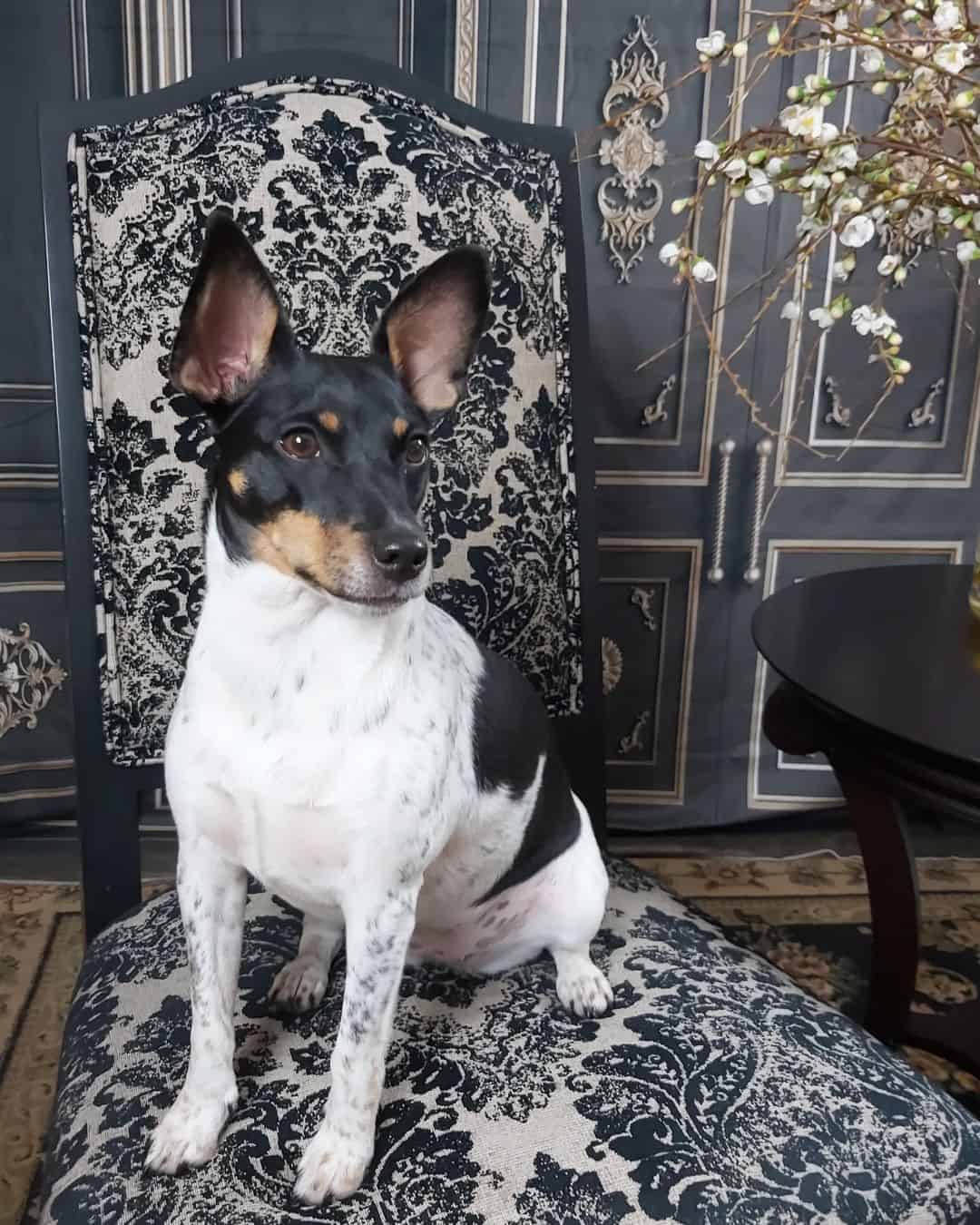
Photo from: @bella_bluethedog
This is a combination of adorable Jack Russell pups (male in most cases) and ACDs (female Blue Heelers).
When you combine a medium-sized pup such as the Heeler with a small pooch like the Jack, the best chance is you’ll end up with a medium-sized canine that contains the best traits of both breeds.
Cattlejacks may have more physical similarities with Jack Russells, but the coat shades of a Blue Heeler. However, this isn’t the rule, and it can be another way around.
What we do know is that this crossbreed has a strong and muscular body and that they’re very agile.
When it comes to life expectancy, Cattlejacks are expected to live longer just like Jack Russels, which can live up to 16 years.
What Is A Blue Heeler?
This is a type of the Australian Cattle Dog, which is essentially the ancestor of both Blue and Red Heelers.
Blue Heelers are often called ACDs when speaking about the breed in general. However, this isn’t the only name that’s used for them.
Blue Heelers are also commonly called Queensland Heelers.
Throughout history, Blue Heelers were used as herding canines for cattle. Their main weapon against disobedient livestock was their teeth, which they used to nip the animals’ heels (now you know where their name comes from).
Nipping might not be their best trait, but these pups generally have some amazing characteristics which prove their worth, without a doubt.
The Origin
Just like the name says, the Australian Cattle Dog comes from Australia, where their ancestors were bred with Dingos, a native canine breed, in order to create the ultimate herding pup.
It is believed that these native canines were crossed with Collies, although some people claim they were bred with Dalmatians, which wouldn’t be a surprise considering the spots on the Blue Heeler’s coat that are reminiscent of Dalmatian coat shades and patterns.
Even though they’ve been around for much longer than just a few decades, Blue Heelers weren’t acknowledged by the American Kennel Club (AKC) until the 1980s.
What Is The Difference Between Blue And Red Heelers?
The main difference between these two types of Australian Cattle Dogs is the color of their coats.
Red heelers usually have red and white coat hair (with red spots all over the body), while Blue Heelers have shadowy-grey to dark-blue speckles all over their coats.
It’s interesting to note that these canines are often considered the same type, even though they’re not.
They do have similar personality traits and physical characteristics in terms of speed and agility, but it’s important to differentiate them because of their colors.
If not, there might be confusion, especially when they’re mixed with other breeds.
Final Thoughts
You might be surprised by the number of Blue Heeler mixes that are on this list, but I’m sure this list will expand even further in future as designer breeds are becoming a hit among dog owners.
Crossbreeding is still a quite controversial topic among officials from major dog organizations.
However, if it’s done ethically and without hurting any pup involved, it can be a great way to merge two great personalities into one amazing dog.
Still, combining two breeds carelessly can cause serious health problems and could result in diseases such as deafness, blindness, progressive retinal atrophy (PRA), cancer, or any other illness that can be genetically passed.
Therefore, if you’re looking for a crossbred canine, make sure to get one from a reputable breeder rather than from backyard breeders or puppy mills.
READ NEXT:
• The Top 10 Best Blue Heeler Breeders In The U.S. (2022)
• Mini Blue Heeler: A Dog You Don’t See Every Day
• Catahoula Blue Heeler Mix: Guide To The Catahoula Heeler
